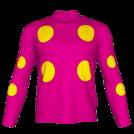
CATMINT -A SON OF SPEARMINT
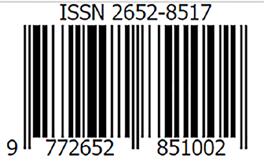
HYPERNO - AN OLD FAVOURITE
ANOTHER GREAT RACE IN HISTORY

TURFmonthly
April 2022 THIS MONTH
THE AUTUMN SUN AT STUD
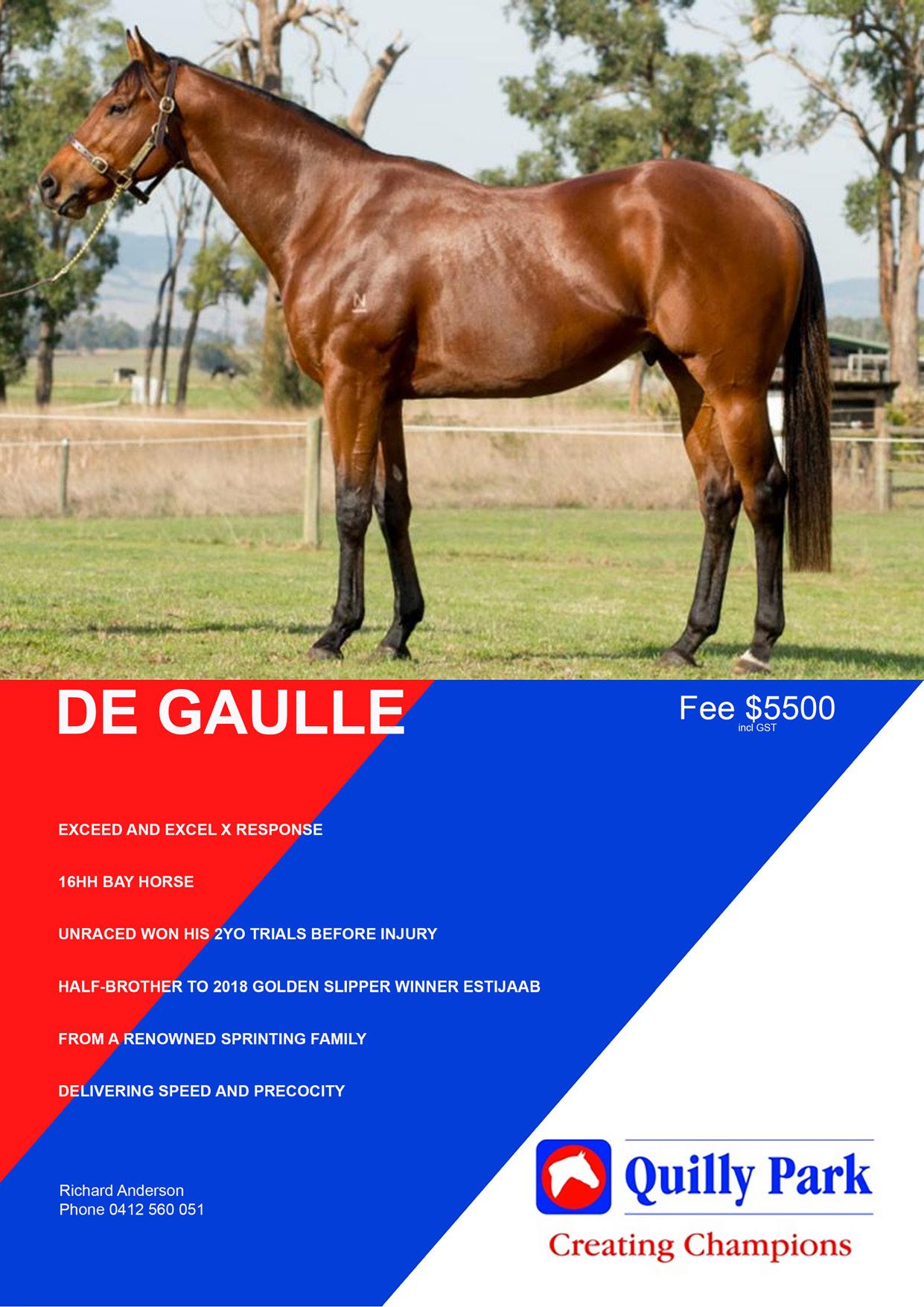
Welcome to another edition of Turf Monthly. Being a monthly production, our publishing schedule might seem a bit strange especially in an era of rapid news. Our deadline is much earlier than some may expect, and this is not usually an issue except when we see a race like the Golden Slipper falling later in month. On the other hand, this gives us a good chance to look at the race and the winner in some depth in May. I doubt that you are looking to us for the result but rather for a different view on what impact the race may have on the breed, or for how it connects with our rich history. This month we continue to look at the impact of Carbine on the breed, and particularly some of the lesser known influences. This leads us to the old warhorse Hyperno who captured the imagination of plenty of racegoer. Looking at his career did raise a couple of questions for me. The first one we mention in our GREAT RACES feature. The Australian Cup is one race that has had its ups and down. With a focus on history, this always saddens me when we lose this connection with the past. Hopefully though we are only in one of the downturns and the Australian Cup will return to its rightful place. Its history though has always been one of ups and downs and it probably reflects the current crop and rivalries more than the actual conditions of the race itself. I have spoken lately with a few people who talk of how the new races are bringing a new generation of racegoers. Races like the Everest for example are put forward as the long term future of racing. To me, these are the Super League of racing. A race for the elites which can be manipulated by who has the most money. Sure, the spectacle can be wonderful, but imagine if this was channelled into those races that have been proven over time. We have an industry that gave the battler the same chance as the wealthy. The stories of the backyard trainer made good or the $1000 yearling that earns a million. That is what makes racing special. The money is important, and it is what makes the industry continue at the end of the day. But it is the memories that remain long after the money is gone.
Until next month
Ross Prowd

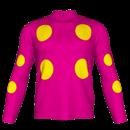
Editor’s Letter Turf MonThly ABN 64 892 144 940 PhoNe 0412 712 181 Email editor@turfmonthly.com.au Unit 4/125 West St Menzies Qld 4825 CONTENTS 4 N ew S t A llio NS A t the S A le S 5 t he A utum N S u N 11 e N cry P tio N 16 S P e A rmi N t S o NS - c A tmi N t 21 c A t A logue 31 m ore c A tmi N t 33 m r t iz 34 c A tmi N t D A ughter S 36 o rte NS i A 37 w il D m i N t 38 c l ASS ic m i SS io N 40 h y P er N o 43 F il AN te 46 g re A t r A ce S - h y P er N o TURF MONTHLY 3 COVER IMAGE THE AUTUMN SUN courtesy of Brownyn Healy and Arrowfield Stud

THE AUTUMN SUN ENCRYPTION
THE AUTUMN SUN
REDOUTE’S CHOICE TODAY

Standing at Arrowfield Stud for a fee of $66,000, The Autumn Sun is one of the most exciting stallion prospects in recent times. A Group 1 winning 2yo and the champion 3yo of his year, The Autumn Sun is arguably the best son of his champion sire to ever go to stud. If there is a query about his potential, it is the European nature of his female family. While knockers may point out that it is not a family of early 2yo’s, it is also possible that this factor may allow The Autumn Sun the versatility to become a true breed shaping stallion like his famed sire. No assessment of the stallion can ignore his spectacular racing performances, and this is where we will start.
A$700,000 purchase for Hermitage Thoroughbreds, The Autumn Sun was trained by Chris Waller and made his first official racetrack appearance in a 2yo trial on 8 December 2017. It was a debut that could hardly have been more impressive for a youngster even though oddly, the runners behind him were never to win a race in their careers despite some expensive breeding. Still, that takes little away from his performance. Eleven days later he won another trial, this time in a field where every
TURF MONTHLY 5
runner was to later win multiple races. Connections must have been excited for the future as The Autumn Sun went for a break. He returned with an eye catching third in another trial at Rosehill and then won a Randwick trial in preparation for his first race start. This was perhaps appropriately on Anzac Day when he appeared in a 2yo maiden over 1200m when ridden by Kerrin McEvoy at Randwick. Despite getting back in the run, he was clearly a class above the opposition strolling to a 1.5 length victory. A month later he was to win again at the same track over 1400m this time starting at odds on. His first real test was to come two weeks later when he travelled to Brisbane for an ambitious bid at the Group 1 JJ Aitkins over the 1600m at Doomben. He beat another very good Waller trained galloper in Zousain who had won the Champagne and run second to Lean Mean Machine in the BRC Sires Produce at his two previous starts. The David Hayes trained filly Fundamentalist was to run third.
Aftera brief spell, The Autumn Sun was back for the Spring with his first engagement the Group 2 Stan Fox over 1500m. He had a torrid run but flashed home for third on the heavy 8 at Rosehill. Next up was the million-dollar Golden Rose back over 1400m at the same track two weeks later. Settling last, The Autumn Sun looked in an impossible position when Zousain kicked clear within the last 200m. In a stirring effort, the champion colt hit the front in the shadows of the post to record a memorable victory. At only his sixth start, it was then to Melbourne for the Group 1 Caulfield Guineas. Ridden much closer to the lead, albeit three wide for most of the race, The Autumn Sun stamped himself the outstanding colt of his year by demolishing a strong field in the time honoured event. Deservedly, the colt was sent to the paddock to await the Sydney Autumn.
On 23 February, The Autumn Sun won first up in the Group 2 Hobartville Stakes, so long a great guide for the rest of the season. Over the 1400m, The Autumn Sun again was giving away a big lead inside the 200m, but stamped his brilliance by swamping the handy Vegadaze, winning easily by almost a half-length. Next up it was the Randwick Guineas over 1600m. For many it was the race that took The Autumn Sun from a top class 3yo to a star. The race was run at breakneck speed, and The Autumn Sun was a dozen length from the lead as the field entered the straight. Early leader, Miss Fabulass compounded and Fundamentalist, who had finished third to The Autumn Sun in the JJ Atkins, strode clear, bounding away to almost certain victory. The Autumn Sun though staged a remarkable finish to reel in the leader on the post, with an official margin a clear cut 0.2 lengths such was the power of the colt’s finish. A new star was well and truly born. Sadly, for Australian racing, the colt was to have only one more start, winning the Rosehill Guineas over 2000m from a gallant Arrogant. The mighty mare Winx was to win the following race that day, the George Ryder. She was also to be retired after only one more run which made the retirement of The Autumn Sun an even greater blow to the turf.
There is no doubt that The Autumn Sun was one of the best colts to grace a racetrack. The question today though is his future at stud. The first argument from knockers will be that he did not win one of the pre-eminent 2yo races. He did not start racing until relatively late in the season, but does that really matter? He was clearly a standout performer in his early trials, and this is where patience comes in. With a different owner and trainer, no doubt The Autumn Sun could have pushed on to race early. Personally, I have little doubt that he would have been competitive
TURF MONTHLY 6
in any race just on sheer talent alone. How that would have impacted his later performances we will never know, but history has shown us that champions can do things that ordinary horses cannot. When he did reach the track, his form was franked against horses that had performed against the top level making this rather a moot point. The next step in this argument against the racetrack performance is that he was not exactly a speed type. In fact, it is possible that he could have gone on to win a Derby. The biggest reason as to why he did not is likely that in the modern era, a Derby win in Australia is often seen as a kiss of death to a stallion career. It is simply nonsense in terms of breeding principles. Race performance is not a genetically inheritable trait. The best we can say is that there are certain characteristics that are related to the ability to race over particular distances. We cannot say which of these will be transmitted by any potential stallion, although experience does tell us which may be most likely. The fact remains that The Autumn Sun won as a 2yo over 1200m and even won a trial around 800m.
The best clues as to the success of The Autumn Sun are in his pedigree. His sire line needs no introduction to any even casual racegoer. His sire is the great Redoute’s Choice who in turn was the best sire son of the incomparable Danehill. Redoute’s Choice produced over 150 stakes winners in his career, and he has outstanding sons like Snitzel and Not A Single Doubt who in turn are proving their continued influence through emerging sons of their own. There are clues to the future of The Autumn Sun in their success, but before we get to those, let us look at the other important factor, the stallion’s female line.
The Autumn Sun was the second named foal of the imported Galileo mare, Azmiyna. She was an unraced daughter of the stakes winning Lear Fan mare, Asmara. She had won a Listed race over 2000m at Leopardstown in Ireland. That makes Azmiyna a half-sister to Azamour by Night Shift who was a champion racehorse in his own right, and champion older horse in Europe in 2005. He won four Group 1 races in the Irish Champion Stakes, King George VI and Queen
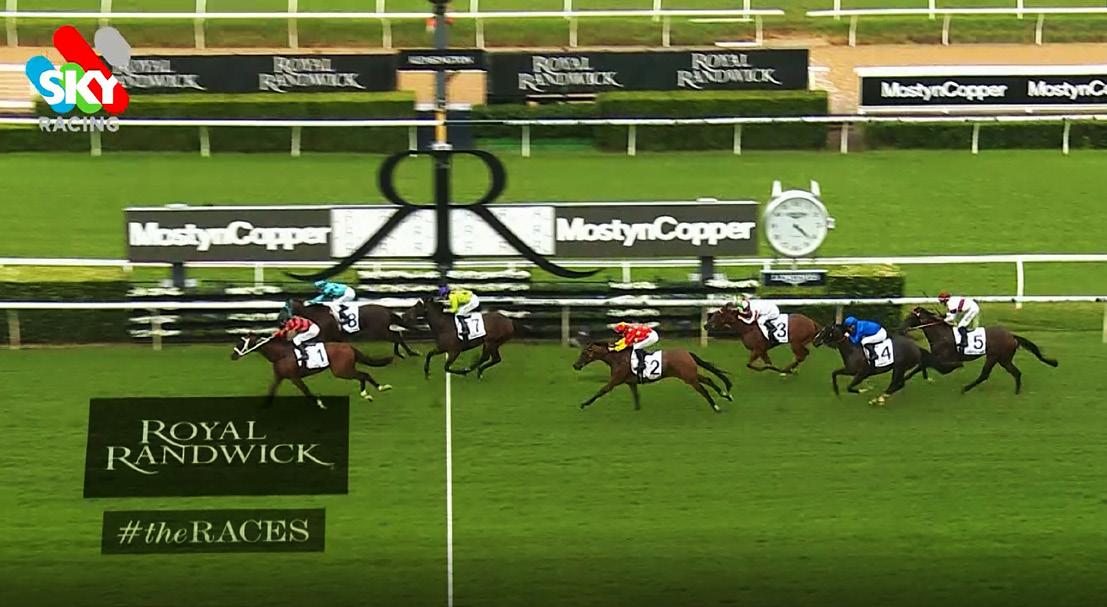
TURF MONTHLY 7
Elizabeth Diamond Stakes, Prince of Wales Stakes and the St James Palace Stakes at Ascot. The family is one of the Aga Khan’s great thoroughbred lines, and Azamour sadly died at the age of only thirteen as he was establishing his name as a sire. He was to shuttle to New Zealand for only one season in 2005. We actually see the evidence of his potential through the good filly, Hungry Heart. His best locally bred runners were Aloisia who won the Group 1 One Thousand Guineas and Polly Grey who won the 2021 ATC Epona Stakes. He also sired the imported Best Of Days who won the Group 1 VRC Cantala Stakes, MRC Coongy Handicap and TS Carlyon Cup. The family traces to the great mare, Alice Hawthorne of the Bruce Lowe number 4 family. This line in more recent times is best known for the underrated stallion Quest For Fame who stood at the Ingham Brothers Woodland Stud. Among his best progeny were Dracula, Viscount and the ill-fated champion Unworldy. Another interesting stallion from the family is Huntingdale, an Irish bred horse who won the Group 1 Dewhurst and stood in Australia where he had limited success outside of producing the brilliant Gold Brose. Another stallion from the family was Green Tune who won two Group 1 races in France including the 2000 Guineas. We know him best in Australia as the damsire of the 2012 Melbourne Cup winner Green Moon.
The list of good stallions from the family does not stop there. Storm Bird was a Canadian bred son of Northern Dancer who won the Group 1 Dewhurst in the UK, and was to prove an influential stallion producing the likes of Storm Cat, Bluebird, Summer Squall and Prince of Birds. We also see Ile De Bourbon by Nijinsky who won the Coronation Cup and King George VI and Queen Elizabeth Stakes before producing multiple Derby winner, Kahyasi who we know best in Australia as the sire of the champion jumper Karasi who was a three time winner of the Group 1 Grand Jump in Japan. The European champion Falbrav who won eight Group 1 races internationally including the Japan and Hong Kong Cups is still another from the family. He shuttled briefly to Australia with some success including producing the QTC Sires Produce winner, Fravashi. Puissance was an underrated shuttle stallion at Eureka Stud in Queensland who also hails from the same family and was a regular source of winners in that State. While we can suggest that many of these had something of a stamina bias, it was an Australian bred member of the family that is bound to be well known to most readers. The 1987 Golden Slipper winner Marauding proved to be a top line stallion producing the champion filly, Burst, Oakleigh Plate winner, Drum, and another Golden Slipper winner in Prowl. It is hard to imagine more of a speed family than this one. The son of Sir Tristram was out of a Biscay mare and this strong colonial focus is something that we should take note of when we consider the future prospects of The Autumn Sun.
The pedigree of The Autumn Sun will obviously play a key role in his success. As a son of Redoute’s Choice, we obviously have some potential ideas as to what might suit. On face value though we see that there are two sons of Northern Dancer in Danzig and Nijinsky. It is probably not a surprise that we saw Ile De Bourbon, a successful runner from the family was by Nijinsky. Notably we also see the presence of Canny Lad in Redoute Choice’s pedigree and again, it is interesting to note that Marauding saw Canny Lad’s grandsire in Biscay so prominent in his makeup. Through the dam of The Autumn Sun we see his damsire Galileo is a son of Sadler’s Wells, also by Northern Dancer. Importantly Galileo’s dam is a daughter of Miswaki, a son of Mr Prospector and this could be one of the major dangers in finding the best matings for The Autumn Sun. Further into the stallion’s female line
TURF MONTHLY 8
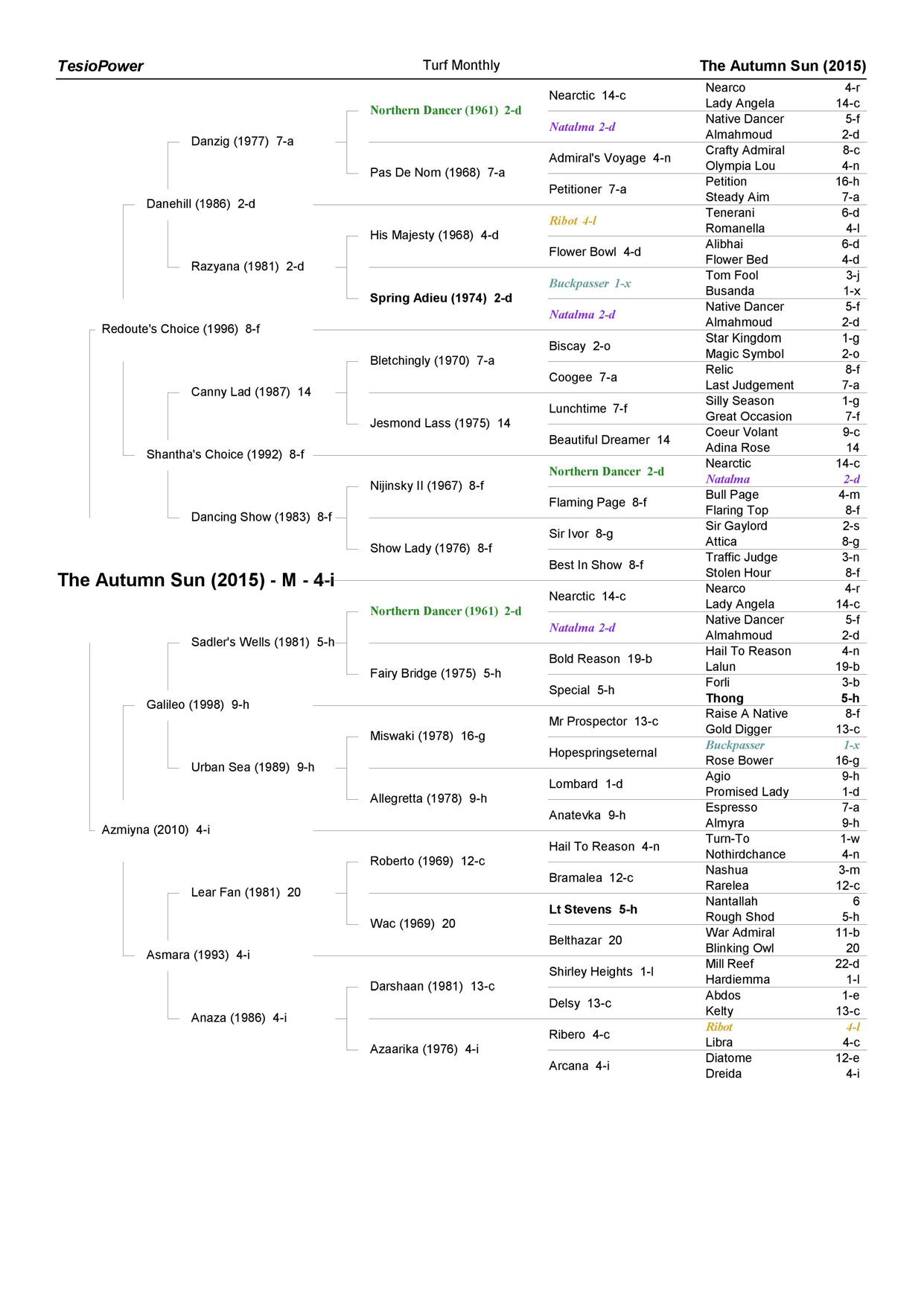
The Autumn Sun with inbreeding of 8.98% is quite surprisingly has one of the most heavily inbred pedigrees that we see this month. The key to the pedigree is undoubtedly Northern Dancer and it is no coincidence that he appears in both the tail male lines of the sire and dam of The Autumn Sun. These two are Danzig and Sadler’s Wells and these are influences that we have seen had great success in these positions in many pedigrees across the world. It is interesting that the other son of Northern Dancer is the great racehorse Nijinsky. There is also no doubt that much of the success of Danehill traces to the influence of Natalma, the dam of Northern Dancer who also appears in his own female line. The other duplications in the pedigree are Ribot and Buckpasser, again both stallions who appear in the pedigree of Danehill.
we see Lear Fan, interestingly the sire of the excellent HK galloper, Good Ba Ba, who is by Roberto, a stallion who sired another Melbourne Cup winner in At Talaq. We also see in Lear Fan a stallion called Lt Stevens who is a grandson of Nasrullah and out of the wonderful mare, Rough Shod. Further in Lear Fan’s pedigree we also see the great champion War Admiral. Looking further into the female line of The Autumn Sun there is the presence of another champion in Ribot, and interestingly the good stallion Darshaan, a son of Shirley Heights.
It will be relatively difficult to find a huge number of mares that do not have some level of inbreeding. Clearly mares carrying Redoute’s Choice are high risk options. There is also a concern of course over some mares that carry Danehill close up. We have seen this issue for some time now, and although caution must be taken, it is certainly a strategy that may meet with success. Possibly mares by Fastnet Rock might offer some interesting factors, as may daughters of Exceed And Excel. They both are sons of Danehill who produced a different type of progeny really than Redoute’s Choice, and as we saw with Northern Dancer, it is those sons that have that variation that have worked best when appearing through multiple lines. The European lines though are ones that probably will be more hit and miss. One would suggest that The Autumn Sun might well be able to produce progeny that will get over some ground by breeding to some of the stamina influences in his pedigree, but it will have to be done with great caution. Duplicating Sadler’s Wells as an example might not meet with regular success, but it is likely a strategy that may strike gold in the right mating. Another interesting factor in the future of The Autumn Sun is the age of his sire when he was born. Redoute’s Choice was born in 1996, and his best sire sons were born early in his career. They have continued to sire stallion prospects of their own, and in the next few seasons we are likely to see Redoute’s Choice pushed back to the third generation of new stallions. It does beg the question as to whether the breed may have moved on since Redoute’s Choice went to stud. Alternatively, The Autumn Sun is arguably the best performed son of that stallion to go to stud. It is probably not something we have seen before in history. The huge number of mares that stallions now cover mean that we are now in new territory, and The Autumn Sun might show us an ability to reignite some of these older lines in such a rapidly moving breed.
Most likely though it will the local lines that will be make or break for the stallion. The likes of Lonhro and Pierro of course are stallions who should have plenty of suitable daughters. Another stallion who might also find suitable daughters for The Autumn Sun is Written Tycoon. The introduction of this type of speed in particular would go a long way to overcoming any perception of the stallion not being the early 2yo type. With these types of mares at the forefront, it would not be hard to see The Autumn Sun reach the heights at stud that he did on the track.

TURF MONTHLY 10
EXCELLENCE IN QUEENSLAND

Encryption is a surprise packet among the stallions that we have been looking at. He stands in Queensland, at the famed Eureka Stud on the Darling Downs, for the relatively modest fee of $13,200. The stallion has covered good books of mares, and his early sales results have been nothing short of outstanding. At Magic Millions, his progeny averaged over $200,000 which is an incredible return for breeders. A son of the top stallion Lonhro, out of the Group 1 winning mare Guelph, he was one of a long list of outstanding racehorses from the Darley organisation. A lot of work was done by the McAlpine family to secure part ownership of the stallion to be able to offer this quality stallion to Queensland.
One the track, Encryption had his first start in October 2017, running third in the Debutant Stakes at Caulfield behind Qafila. A four week break saw him finish a narrow second to Run Naan in the time honoured Maribyrnong Stakes. Encryption returned for the Autumn with a second in the Chairman’s Stakes at Caulfield before a slashing run to finish fifth behind Written By in the Blue Diamond. He finally broke his maiden in the Black Opal winning by a half-length from Sizzling Belle. Encryption missed the Golden Slipper and ran sixth in both the Sires Produce and Champagne Stakes behind El Dorado Dreaming and Seabrook respectively. As a three year old he won the Group 2 Danehill Stakes beating Thorondor and Tavisan. He also ran second to Written By in the Group 3 Blue Sapphire and a close fifth
TURF MONTHLY 11
ENCRYPTION
behind champion mare Sunlight in the Group 1 Coolmore at Flemington. His last campaign was in the Autumn where he finished second in the Oakleigh Plate behind Booker with Eduardo in third. He was beaten less than a length after coming from twelfth at the 400m. Encryption also ran seventh in the Newmarket behind Sunlight beaten just over three lengths, again coming from well back, and fourth in the Galaxy behind Nature Strip this time coming from tenth at the 400m. Overall he won two of nineteen stakes but earned almost three-quarters of a million dollars in a career that saw him fall just short of the best. For breeders, and for Eureka Stud, these near misses allowed the opportunity to access one of the most exciting pedigrees that we have seen in our new stallions.
The stallion as we mentioned is a son of the great Lonhro out of Guelph by Exceed And Excel. Lonhro needs little introduction being a true champion on both the track and in the breeding barn. He was also a son of one of Australia’s most popular racehorses in Octagonal. Guelph herself was the winner of seven races including the Group 1 ATC Sires' Produce, Champagne Stakes, Flight Stakes and MRC Thousand Guineas. Her dam was the Group 1 winning Camarilla by Elusive Quality who also won the ATC Sires Produce. She was also to produce another Group 1 winner in Bivouac who won the VRC Sprint Classic, Newmarket and ATC Golden Rose. The third dam of Encryption is the Queensland Derby winning Camarena by Danehill who was a half-sister to the champion two and three year old Sepoy by Elusive Quality who was later to go on to become a top stallion. Their dam was Canny Miss who was a half-sister to the great Canny Lad and his sister Canny Lass.
Encryption we see has a relatively moderately inbred pedigree suggesting that there are different strategies that may be successful. There appear relatively few options that should be dismissed out of hand, although we may not find all that many local stallions that will represent true outcrosses. Having said that, there are very strong colonial lines through the stallion so breeding to overseas lines may have their own benefits. Perhaps there are two issues that will need careful planning. Firstly, the elephant in every room in modern breeding in Australia is Danehill. In
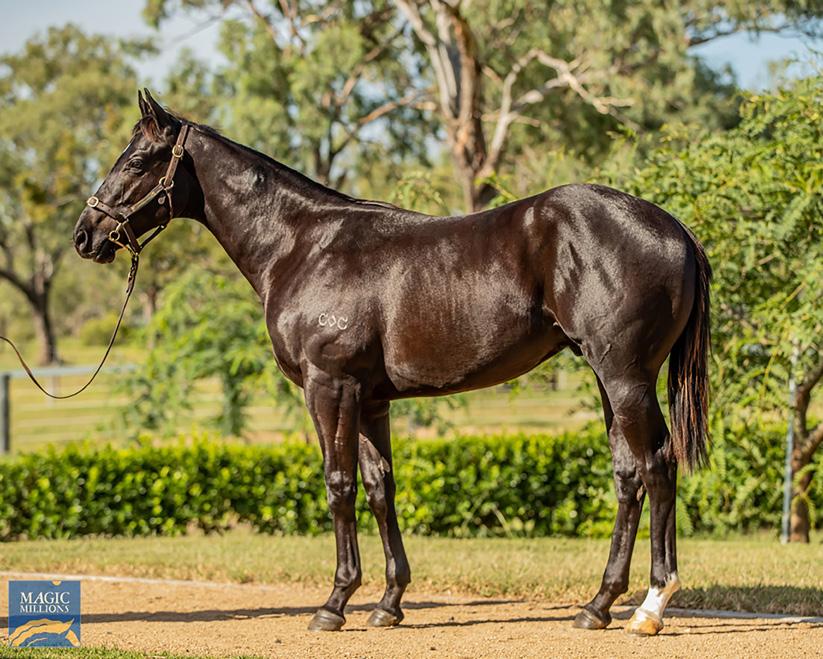
TURF MONTHLY 12
Encryption Lot 145 Magic Millions

Encryption has a relatively moderately inbred pedigree at 6.25%. The closest duplication is an all-male cross of Mr Prospector which we have discussed in the future success of the stallion. We see two sons of Mr Prospector in Straight Strike and Gone West which is a little surprising when these are sons that we probably do not see as often in Australia as some others. Woodman, Seeking The Gold and Hussonet of course are some that immediately spring to mind. Interestingly these two sons duplicated are probably quite similar in type. Outside of Mr Prospector, we see a sex balanced cross of Sir Ivor and five lines of Northern Dancer. Two of these of course are through sons of Danzig who both appear in the pedigree of Guelph via a Danehill duplication. If we were to compare this pedigree to some of the other champions that we regularly look at in TURF MONTHLY, we may suggest that it appears a little weaker in many ways. While this may have impacted his overall racing performance, it is not an indicator of stud performance, merely a guide as to what strategies may work best with the stallion.
the case of Encryption, his pedigree sees Danehill appear twice but significantly this is cross balanced. Breeders must be aware though of the inherent dangers of introducing another line of Danehill, but if this is carefully managed, it should be able to be a positive feature in many of the offspring of the stallion. Perhaps all that really needs to be said is that it is likely to be less of a feature the further back we can push Danehill into the mare’s pedigree. If we extend this a little, we see that Danzig also appears twice as the sire of Danehill. If we bring in another line of Danzig apart from via Danehill, this may represent alternate issues. The other key issue is that we see two male lines of Mr Prospector. His incredible influence on the breed diminished in the face of the dominant Danehill lines and we are now seeing him appearing through multiple male lines. The US nature of his pedigree though brings its own difficulties, and this is something that needs careful thought. There are real risks in breeding to what we might consider more dirt track traits in the progeny if we introduce additional male lines of this stallion.
Having said that, the presence of Mr Prospector is an interesting mix if we bring in mares that carry Encosta De Lago. A key feature of his pedigree was the female line of Mr Prospector and this could be a positive for Encryption although we are seeing fewer daughters of Encosta De Lago these days. He does however have sons like Rubick at stud, and his daughters are now breeding. Of course, the question is whether we can find these types of mares that do not carry multiple lines of Danehill to further complicate the matings. This becomes more evident if we look at a stallion like Shooting To Win, a grandson of Encosta De Lago who carried not only three lines of Mr Prospector, but one of Elusive Quality through a female which repeats the pattern we see in the pedigree of Guelph, the dam of Encryption. This is the style of mating that is probably best avoided in most cases unless a family specifically needed these types of influence. We see this issue also raised when we look at mares that carry Lonhro and Zabeel. I would suggest if these stallions are carried through a son, then it probably would raise some warning signs within a mating. However, these are certainly not lines that have been prevalent in Queensland in particular.
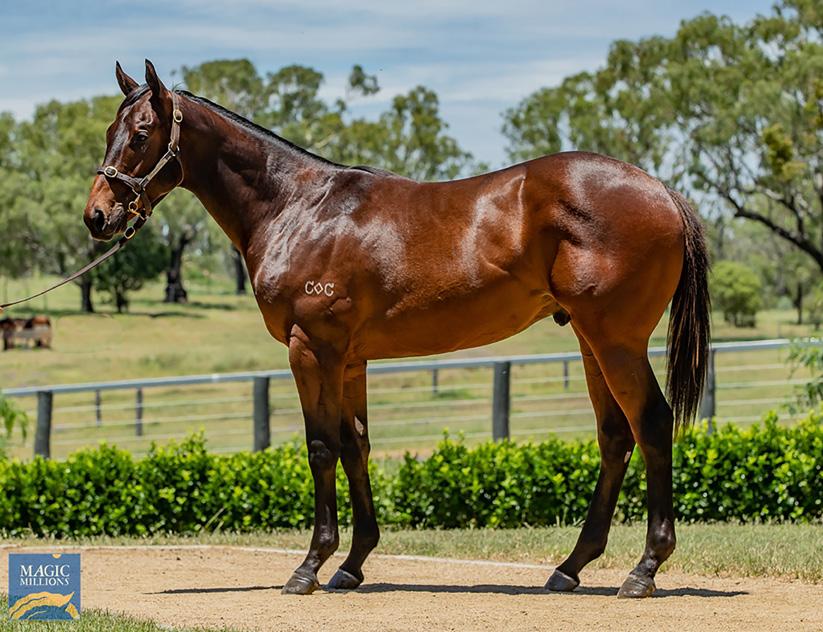
TURF MONTHLY 14
Encryption Lot 235 Magic Millions
Another of the real positive sides of the pedigree of Encryption is that he hails from the same female line as the great Canny Lad. Perhaps two of the most readily identifiable sources of Canny Lad are Redoute’s Choice and I Am Invincible, both wonderful stallions who are both now having sons and even grandsons at stud. Rothesay and Sepoy are two successful stallions from this direct female line, and it is particularly interesting that Rothesay has stood for many years in Queensland. Sepoy we see is a son of Elusive Quality which perhaps creates an issue, but for broodmare owners, spending time looking at seeing what has worked with him could pay good dividends.
Outcross pedigrees will always be an attraction and in the case of Guelph, mares by stallions like Bel Esprit, Written Tycoon, and Show A Heart fit that bill quite nicely and all stood in Queensland at one time. While mentioning Queensland stallions, we cannot ignore Encryption’s paddock mate in Spirit Of Boom. The stallion will obviously have opportunity to cover some of these mares and again, if well planned there are strengths that could achieve good results. On the negative side, it is hardly likely that the stallion will suit every Spirit Of Boom mare. Overall though, a bit of time and effort spent in finding the right mares for this stallion is likely to reap significant reward. While standing at such a moderate price in Queensland, it is hard to see Encryption rise to the top of the Australian Sires Table. Nonetheless should get more than his share of good quality progeny to ensure that he will make an impact on the local breed.


TURF MONTHLY 15

THIS MONTH CATMINT
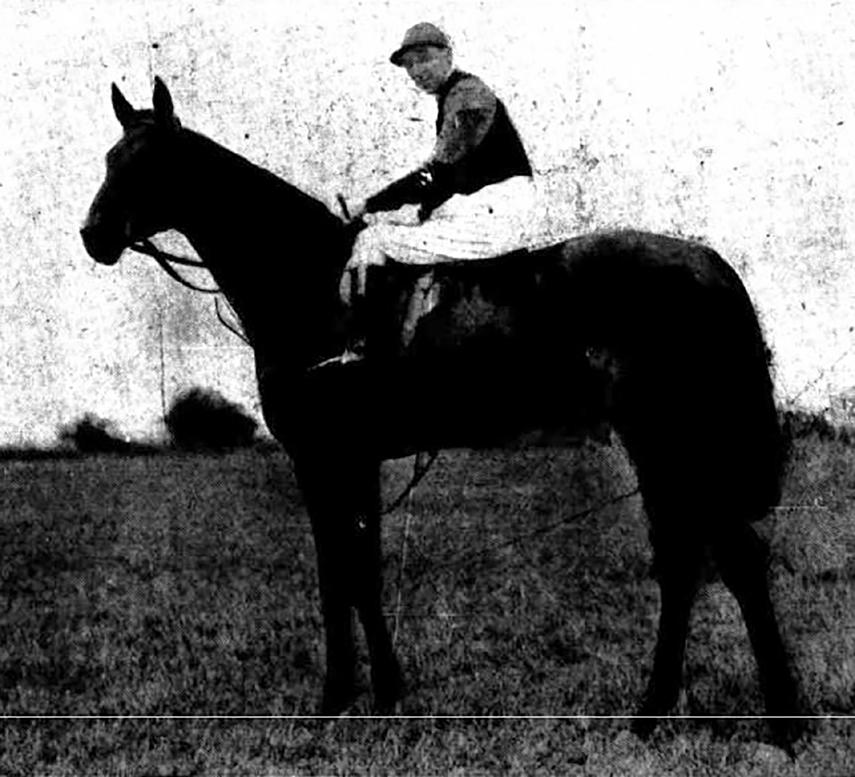
Continuing our feature on the impact of the mighty Carbine through his son Spearmint, this month brings us to a rather unheralded stallion in Catmint. Born in 1909, Catmint was raced by Sir Leonard Brassey and was a quality galloper winning the Prince Of Wales Stakes and running second in the Gratwick Stakes as a 3yo. At four, Catmint ran second behind another son of Spearmint in Lance Chest who had been bred and raced by Major Loder. He then had perhaps his most important win in the Goodwood Handicap. Catmint was out of the Persimmon mare, Red Lily who also produced Bernard who was to stand at the Hobartville Stud in NSW with some success. More notably though, while it does not involve Spearmint as this stallion was by the Ayrshire horse, Robert Le Diable, Bernard was the sire of Bern Maid who was to go on to produce on of Queensland’s favourite sons in the legend, Bernborough.
TURF MONTHLY 17
Catmint
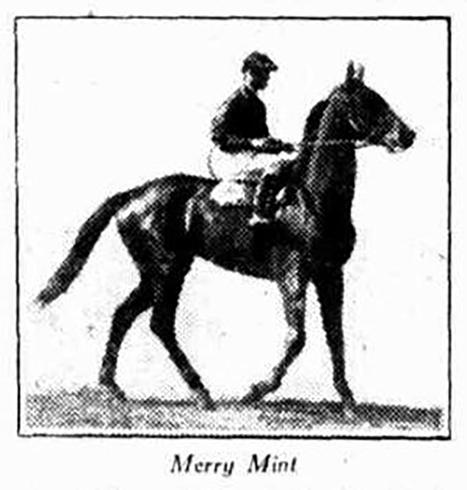
Catmint was sold to the New Zealand company, Auckland Stud Company. He stood for only ten years before being euthanized after an attack of acute paralysis. Interestingly at the time, the attraction of the stallion was his grandsire, Carbine at a time when Wallace was so effectively continuing his legacy in Australia. Catmint was considered a good stallion with most of his progeny paying their way. He did sire eight stakes winners with his best likely to have been the outstanding Prodice who won six stakes races including the NZ Oaks and Guineas, and the Avondale Cup and Guineas. Other of his notable winners were two other NZ Oaks winner in Danae and Speed Mint. His only Australian stakes winner was Merry Mint who rather coincidentally won the AJC Hobartville Stakes.
Sadly, none of Catmint’s sons were to go to stud, so we rely on his daughters to continue this influence of Spearmint. His career as a broodmare sire followed much the same pattern as that of his career as a sire. His daughters continually produced good winning progeny without producing anything outstanding. Undoubtedly the best of his daughter’s produce was the perfect example of this. Catalani was a daughter of Catmint out of the imported mare, Symbolism by Symington, a son of Ayrshire. Symbolism had been bred by the King and had won the Wilbraham Plate as a 2yo when starting at 20/1. She was purchased, along with three other mares belonging to His Highness, by noted NZ breeder, JB Reid. Importantly, her younger half-brother Lucknow by Minoru was to be brought to Australia to race where he won the Futurity Stakes and Caulfield Cup in 1919. He was later to prove a good stallion in South Australia siring eight stakes winners including the SA Derby winner, Mount Of Olives, a son of Sister Olive who won the 1921 Melbourne Cup, VRC Bagot winner, Lucky Card, and Toorak Handicap winner, The Gay Mutineer. Their dam Amphora was noted as a full sister to Sundridge who, at stud, was to become a sensational source of speed across the world. Sunridge and Amphora were out of a mare by Springfield called Sierra who was herself a full sister to Sainfoin.
S ainfoin was a solid, impressive looking chestnut who was out a mare that was owned by Queen Victoria in Sanda by Wenlock. Sainfoin was foaled at Bushey Park Paddocks in 1887 and purchased by John Porter at the Hampton Court annual yearling sale. He won his only start as a 2yo in the 5 furlong Astley Stakes. He returned as a 3yo in April easily winning the Esher Stakes after which he was sold to Sir James Miller. He then won a two-horse race in the Chester Dee Stakes over
TURF MONTHLY 18

a mile and a half, followed by the Derby. Even though the race included Surefoot, Martagon and Orwell, Sainfoin’s win was certainly not considered among the best, and the fact that Sainfoin failed to win another race did nothing for his reputation. He did run second behind Amphion in the Hardwicke Stakes at Ascot, and fourth in Memoir's St Leger.
Sainfoin was retired to stud by Miller at Barrow's Paddocks at Newmarket where he was advertised at 50 guineas. He was a moderate performer overall at stud but he did produce Rock Sand who won the English Triple Crown. In all, Rock Sand won five stakes races in the Dewhurst Stakes as a 2yo, and the Epsom Derby, St Leger, St James Palace Stakes and Two Thousand Guineas as a 3yo. He was purchased by August Belmont and sent to the US where he had a significant impact producing Tracery and Friar Rock. A lesser known son was High Rock who was sent to Australia to race where he won the WATC All-Aged Stakes and Grandstand Plate in 1916.
Returning to Catalani, she was purchased by Wanganui sportsman, Mr Reeves for 825 guineas and was set for the 1920 New Zealand Cup without success.
 Sainfoin
Sainfoin
At stud, she proved to be outstanding producing three stakes winners. Paleta by Leighton was the first of these winning the 1927 Auckland Race Club Great Northern Guineas. He was bred by Mr WG Stead and sold to Mr J Todd for 1000 guineas. Paleta was among the best of his year in NZ winning his first four starts as a 2yo before being sent to Sydney but failed in two runs including the Sires’ Produce before connections aborted his campaign. It was reported that upon return, the gelding had lost much of his hair. The Autumn saw him back to his best with his most important win in the Guineas, beating In The Shade by three-quarters of a length. He was also to run second to Limerick in the Champion Stakes and was well-fancied for the NZ Derby. Catalani’s next stakes winner was Hunting Cat (1931) by Hunting Song who won the 1935 Manawatu Cup. By that time, Catalani also had produced a gelded son by Lord Quex. His name, Catalogue and he went on to cement the influence of Catmint in history through an upset win in the 1938. The family had sadly not reached these heights very often in the intervening years. Among the best we have seen from this line are Crying Game who won seven stakes races in Perth in the 1990’s, and Western Cossack, another multiple stakes winner in WA around the same time.
TURF MONTHLY 20
CATALOGUE
PUTTING THE FAMILY ON THE MAP
Sydney Mail (NSW : 1912 - 1938) Wed 9 Nov 1938 Page 27
Catalogue's Melbourne Cup:
CATALOGUE - Catalogue's Melbourne Cup : Remarkable Effort for Moderate Performer
The 78th Melbourne Cup was won by the eight-year-old New Zealand gelding Catalogue, who with Toryboy (1865) is the only horse of that ripe old age to win Australia's most important handicap. There have been four seven-year-olds to place the race to their credit, namely, Nimblefoot (1870), Sheet Anchor (1885), Tarcoola (1893), and Acrasia (1904); but Catalogue's performance ranks with Tarcoola's as the best of the aged division, as both carried 8st 4lb. Toryboy had 7st, Nimblefoot 6st, Sheet Anchor 7st 1 lb, and Acrasia 7st 6 lb. Eight New Zealand-bred horses have now been successful in the Cup, while quite a number have been placed. Previous to Tuesday week the winners from the Dominion were: — 1883, Martini-Henry; 1890, Carbine (second the previous year); 1907, Apologue; 1916, Sasanof; 1929, Nightmarch (with the New Zealanders Paquito and Phar Lap second and third respectively); 1930, Phar Lap; and 1936, Wotan.
By MUSKET.
The remarkable part of Catalogue's win in this year's Melbourne Cup was that he had no credentials to win any race of importance beyond a mile and a quarter, and to think that he could score a runaway win over the best stayers Australia could pit against him at two miles has staggered followers of form completely. To take the lead seven furlongs from home and then win as he liked is incomprehensible, for that style of running a race is usually suicidal, because it gives the stayers the opportunity of making up ground while the leader is doing the pacemaking, and so putting in their finishing runs while he is, as a rule, feeling the effects of his early efforts. But Catalogue is evidently no ordinary horse— at least, he was not on Cup Day. On the other hand, he may be one of those horses who like to be in front, just as Newhaven, the 1896 Cup winner. The latter carried 7st 13lb, the highest weight ever borne to victory by a threeyear-old, and led all the way to win by six lengths. Newhaven was an absolute freak when allowed to bowl along in front, but was not a bulldog fighter when another horse ranged alongside of him. In the Caulfield Guineas, a fortnight prior to the Melbourne Cup, the colt Resolute disputed the lead with Newhaven, with the result that a plodder like The Officer beat both at the finish. Exactly the same tactics were used in the V.R.C. St. Leger, in the autumn after the Cup. Once more Resolute fought with Newhaven for the first mile and a half, when The Officer again swooped down upon them to win. And
TURF MONTHLY 21
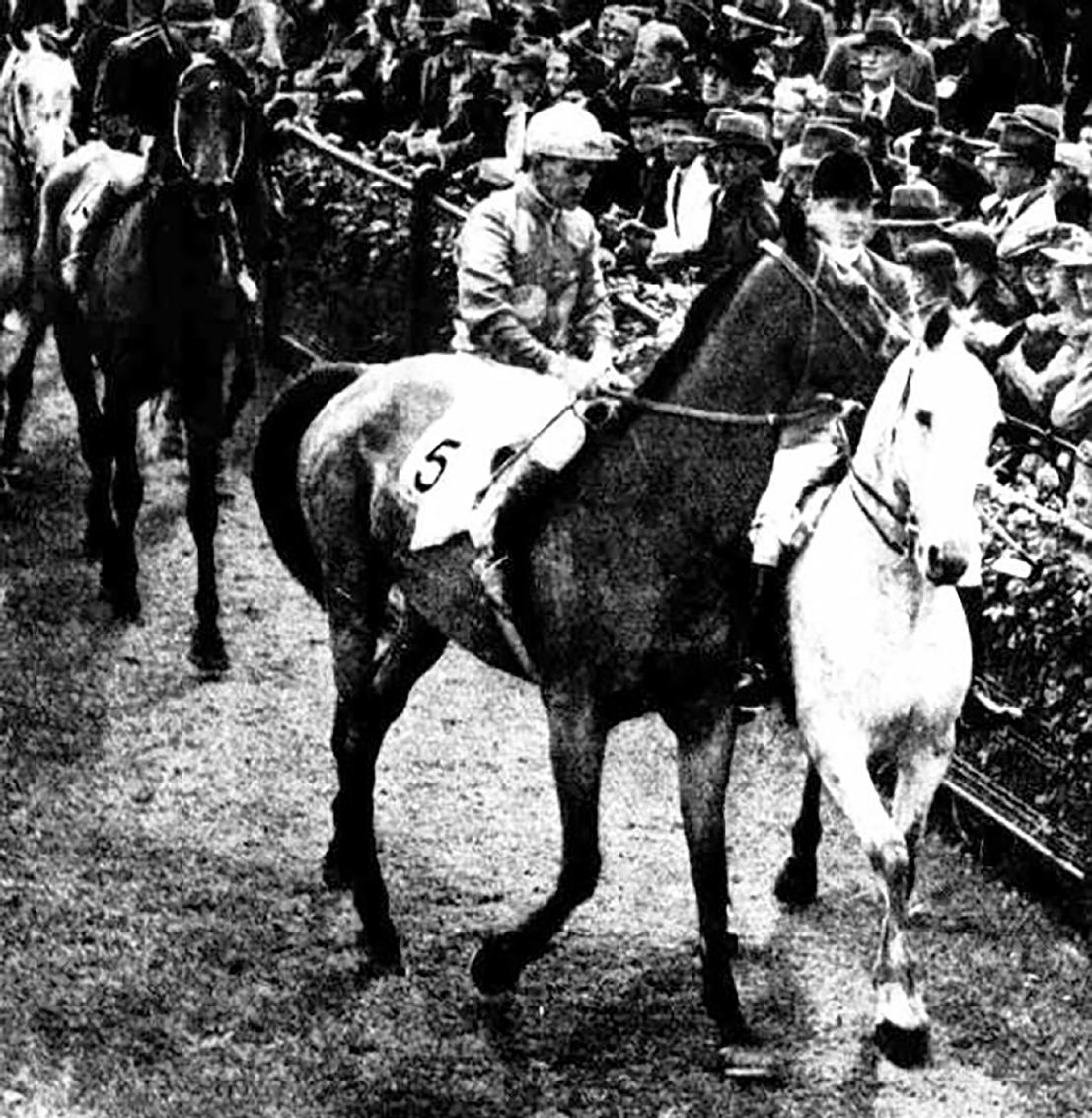
yet if The Officer and Newhaven met in a match the latter would lose the other. This is the only way of accounting for Catalogue's victory — he takes a lot of running down when out in front; but his previous record did not even suggest that he could keep the lead from such fast beginners as Young Crusader and Bachelor King. Eight horses from New Zealand have now won the Cup, and with the exception of Wotan, who holds the record for the race at 3min 21.3sec, all the other winners from the Dominion carry the famous Musket staying blood in their veins. Martini-Henry was a son of Musket, as was the one and only Carbine, who has the distinction of being the heaviest-weighted winner of the Cup, his 10st 5lb being 3lb more than Archer won his second Cup with.
TURF MONTHLY 22
Apologue was by Martian from Ukraine, a daughter of Stepniak, who was a grandson of Musket. Nightmarch had the Musket blood on both sides of his pedigree, as he was by Night Raid from Marsa, by Martian from Nantes, by Stepniak; and Night Raid's dam, Sentiment, was by Spearmint, a son of Carbine. Phar Lap also earned a double cross of Musket, being by Night Raid from Entreaty, whose granddam, Catherine Wheel, was by Maxim, son of Musket. Then Catalogue is by Lord Quex from Catalini, by Catmint, son of Spearmint. It might also be mentioned that Bourbon, runner-up to Catalogue, was out of a granddaughter of Spearmint, whose name appears in the pedigrees of all the most important winners in the world to-day, which embraces the English Derby, Grand Prix de Paris, and the Kentucky Derby, just to mention three of the greatest classics of their respective countries. In the Australian Cup last March, first and second horses were by The Buzzard, a grandson of Spearmint; L'Aiglon, winner of the last Sydney Cup, was also by The Buzzard; and Buzalong, second in the recent A.J.C. Metropolitan and winner of the Caulfield Cup, is another by The Buzzard. All of which goes to illustrate the tremendous influence of the house of Musket where stayers are concerned.
Butall this does not satisfactorily explain why Catalogue pointlessly beat his opponents on Tuesday week, for his dam has had many foals, and the Musket blood failed to make a decent performer of any of them. The Sydney jockey Fred Shean, who secured the mount on Catalogue, wrote to a friend prior to the race, stating that he had the ride but did not fancy his chance, and could not advise his friend to back the horse. He stated that he had tried to get the mount on Young Crusader, but was too late. So it is not likely that Shean would benefit by the win beyond what the lady owner gave him. That present, however, was a substantial one— £1000 for a win, £400 for second, and £200 for third, in addition to his percentage of £350. As a matter of fact, Shean has had a most profitable spring, as, in addition to other successes, he won the A.J.C. Epsom Handicap on King's Head, the Caulfield Cup on Buzalong, and then capped it all by his sensational victory in the Melbourne Cup. Though Catalogue was an outsider, several bookmakers did not relish the victory; and at the trotting meeting at Harold Park on Cup Day at least two of the fielders were losers over his victory. A woman took £64 to £8 about Catalogue running into a place, and the same ringman laid £66 to £2 for a win, which was considerably more than he held. Another fielder laid £500 to £15 against Catalogue, but took the precaution to back the horse for
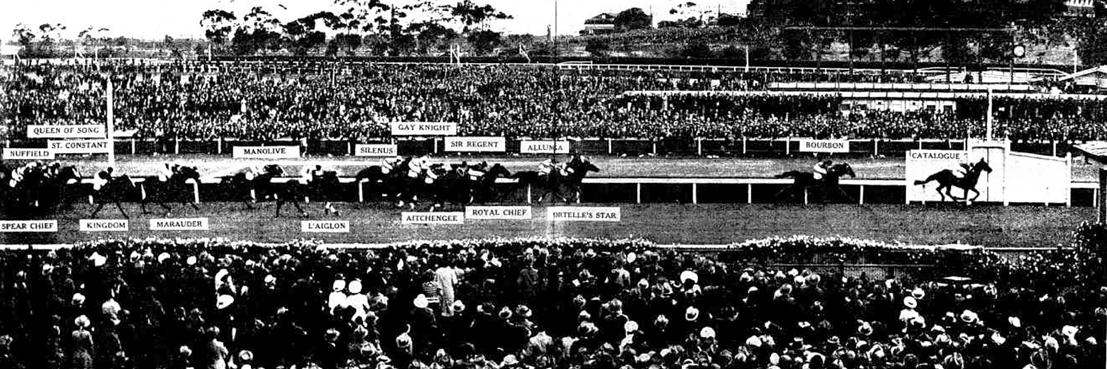
TURF MONTHLY 23
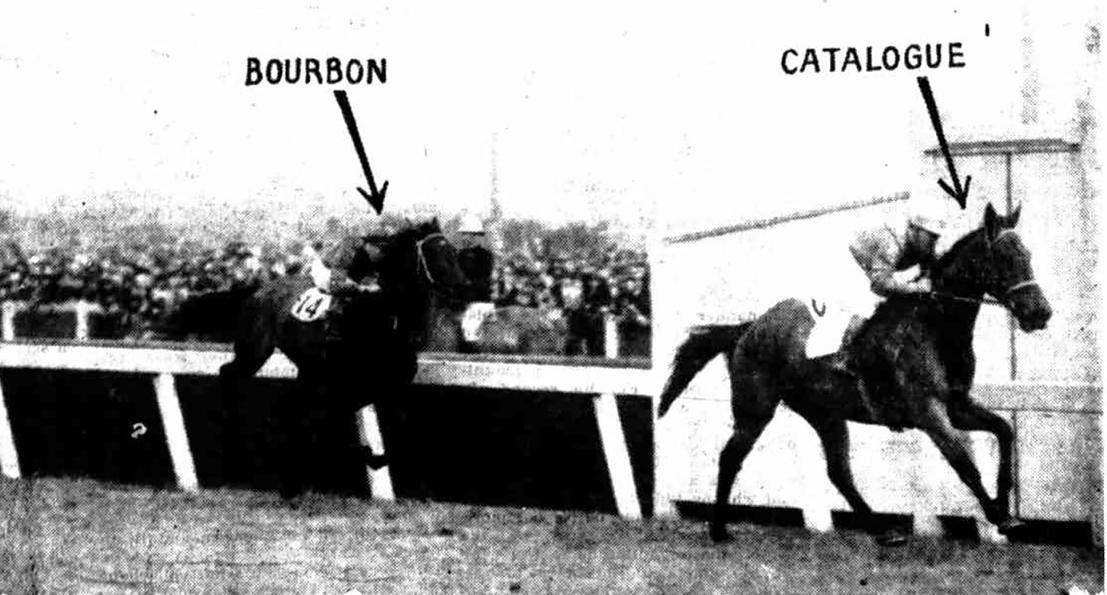
£300, which would lighten his losses. Catalogue is trained by Mrs. W. A. McDonald, of New Zealand; but as women trainers are not permitted in Victoria the gelding was prepared in Melbourne by her husband, who will be remembered as being here about five years ago with a horse named Inflation, and who also rode in hurdle races while here. According to McDonald, Catalogue suffered from a weak heart. Shean is credited with having ‘stolen the race by his masterly tactics,' but if his mount had been beaten the same critics would have condemned him for going to the front seven furlongs from the judge. However, nothing succeeds like success, and Shean is right in the limelight through his wins on King's Head, Buzalong, and Catalogue in three of the most important handicaps of the spring.

Bourbon Winning the V.R.C. Handicap
The Tippler horse Bourbon, who was runner-up to Catalogue in the Melbourne Cup, turned the tables on his conqueror in the V.R.C. Handicap on Saturday by winning easily from Young Crusader and Kingdom; while Catalogue can be seen in fifth place. In the Cup Catalogue carried 8st 4lb, and in the V.R.C. Handicap 9st 5lb, while Bourbon was raised from 7st 12lb to 8st 10lb. The Cup winner, therefore, met Bourbon on 3lb worse terms on Saturday, but was beaten by much more than that difference, which seems to indicate that Bourbon should have won the Cup.
TURF MONTHLY 24
CATALOGUE
THE ESSENCE OF NZ
Clearly the win by Catalogue in the Melbourne Cup was the pinnacle of his career, and came as a major upset. We saw that in the previous extract from the Sydney Mail. Another Melbourne writer was even more harsh declaring Catalogue “a plain, clumsy-looking old gelding that you wouldn’t have considered in the Cup picture at all, makes hacks of the opposition. Catalogue will long be remembered for the trouncing he gave the best handicappers in the land. Without fluke he outstayed and outran them. And to cap it all, instead of dragging a weary body back to scale, he was fresh enough to run another two miles.”
Catalogue was bred by Wilfred Stead at his Flaxmere Stud at Hastings who was notably the owner of the stallion Sasanof. The colt was purchased privately by Ted Barnes for £100 as a rising 2yo after Stead’s death. Barnes was the owner of the Grand Hotel at Palmerston North, and he sold an interest in Catalogue to two locals in AW Akers and L Hughes. The horse raced in these connections until the age of six by which time he had won three of his 35 starts. He had shown that he was above average in ability though running second to the good galloper Red Manfred in the Great Northern Derby and fourth in the NZ St Leger. As a four year old, Catalogue had a complete loss of form and in 1935 was diagnosed with a heart ailment. He had two starts in September of that year, but spent much of the next two years in a paddock. A badly gashed leg also contributed to his time away from the track. Not surprisingly though, Akers and Hughes became discouraged and returned their shares to Barnes. When it was time for Catalogue to return to racing, his regular trainer had no room for the horse so he was given to “Granny” McDonald from Awapuni. In her younger days she had been a successful show jumps jockey, and her father had been a prominent Hawkes Bay trainer. Sadly, because of the rules not allowing female trainers in Australia, the horse raced in Australia under the name of her husband, Allan.
McDonald hacked Catalogue around the countryside and taught him to jump, even taking him to some shows. He appeared headed for a career over the hurdles, but his reinvigorated speed put paid to that notion. Returning as a 6yo his form returned to that of old. Over the next season he won the Awapuni Gold Cup and King George Handicap, the Winter Cup in Christchurch over a mile, the Jockey Club Handicap at Riccarton and finished second to Padishah in the Wellington Cup. Just before Easter in 1938, with the War and Depression starting to bite hard, Barnes sold Catalogue and another of his horses to his sister-in-law, Ada (Tui) Jamieson. Soon after he also sold his hotel. It was Jamieson’s first venture into ownership, but she had a rich racing heritage with her father having ridden Ada, the winner of the inaugural NZ Derby in 1860. Catalogue won the Feilding Easter Handicap over a mile at his first start for his new owner, and in August 1938, at his first start as an 8yo carrying 9st 10lb, won his second Winter Cup. On the strength of that, connections decided that Catalogue had earned a trip to Melbourne for the Cup. Jamieson was later to marry the Supreme Court Judge, Sir Archibald Blair but was widowed again in 1952. She was to die in Sydney in 1978 at the age of 95.
TURF MONTHLY 25
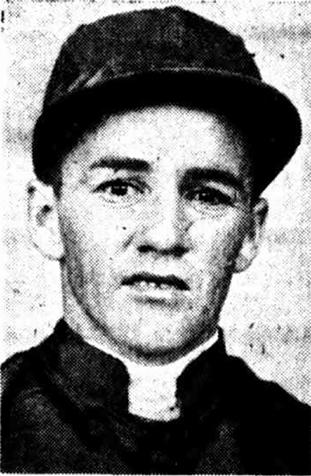

Many Australians argued that Catalogue was able to win the Cup as a 8yo because he was so lightly raced. The fact remains that when he arrived in Australia in 1938, he had raced 75 times and had raced 27 times without a break since returning to racing. Interestingly he had never won past 2000m and had never started over 3200m and this, along with his age and plain looks meant that he attracted little interest from the Press in Australia upon arrival. NZ was well represented that season with the star being the talented 4yo Royal Chief who was eventually to start the 5/1 favourite in the Melbourne Cup. Royal Chief by the imported Chief Ruler was to eventually win 23 races in a stellar career before going on to become a successful stallion. Before arriving in Australia he could count the Champagne Stakes, NZ Derby and NZ St Leger among his list of successes. In Sydney in 1938 he was the dominant horse, winning the Chelmsford and Colin Stephens Stakes at WFA, and set a weight carrying record for a 4yo in the Metropolitan. The runner up in the Metropolitan was The Buzalong who duly won the Caulfield Cup, a race the colt bypassed, franking the Sydney form. Royal Chief then ran second to the legendary Ajax in the Cox Plate before winning the Mackinnon Stakes to become

TURF MONTHLY 26
Fred Shean
Fred Shean on the track after being thrown from Mala after the post in the 1938 Doomben Cup
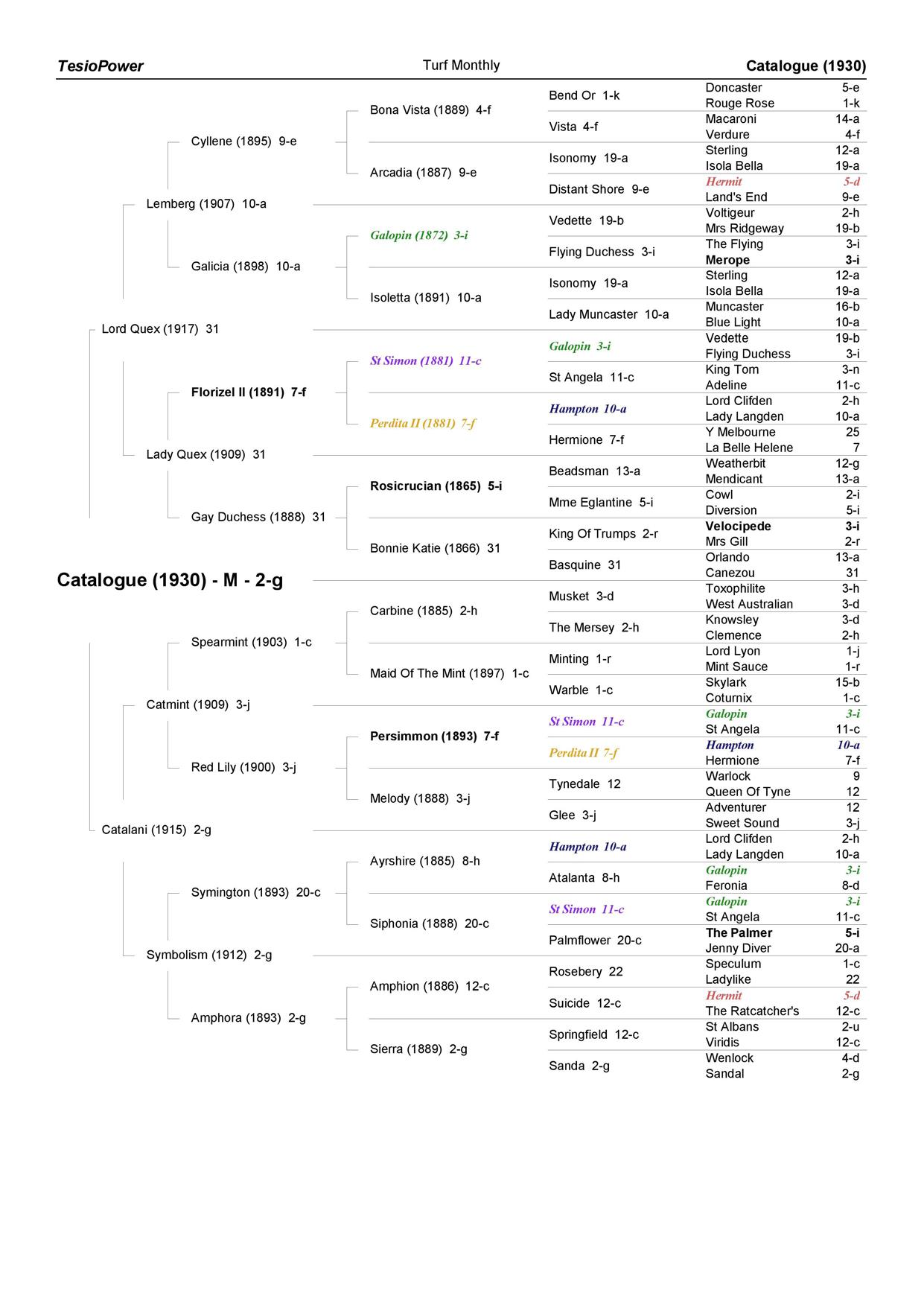
Catalogue has quite a heavily inbred pedigree at 11.72%. While this is often not associated with horses that have the longevity of Catalogue, we can only speculate if this may also have played a role in his long period off the scene mid-career. While we see close inbreeding in this pedigree, it is significant that it is targeted through a few key ancestors and lines. We see two full siblings in Florizel and Persimmon. Their sire was St Simon who was in turn a son of Galopin. Significantly both St Simon and Galopin also appear in multiple other lines within the pedigree. The dam of the pair was Perdita, a son of Hermit, another of the very influential sires of the time. Hampton is another influence that we see also appearing through different lines within the pedigree. The only other duplication is that of Hermit, another regular influence of the time, and interestingly his role is within the top and bottom of the pedigree where we see no presence of St Simon et al. It may also be significant that the bottom line of the sire Lord Quex, and the top line of the damsire Catmint see no presence of any of these duplicated ancestors. Sometimes we must remember that where an ancestor is duplicated is sometimes an important factor in a pedigree.
a warm favourite. Catalogue in contrast, was to have his first Spring start in the Coongy Handicap, running a moderate eighth behind Kingdom. Catalogue ran in the Cox Plate, and at 200/1 caught a few eyes finishing strongly for sixth in a vintage year. On Derby Day, Catalogue was ridden for the first time by jockey Fred Shean, a former Queenslander. He had led into the straight in the Hotham Handicap but was quickly challenged. He fought back impressively to finish third behind the talented Spear Chief. Bookmakers trimmed Catalogue’s price for the Cup sharply into 25/1 following the Hotham, but he remained easy with 50/1 reportedly being readily available at the jump.
The 1938 Cup was run on a soft track which suited Catalogue. It was a slowly run race, with the winner eventually finishing five seconds slower than Wotan’s record. Fred Shean was a firm believer in allowing his mounts to run their own races. When Catalogue started to want his head around the mile, Shean let the horse have more rein and the old gelding strode to the front easily. Catalogue had built up a comfortable lead by the time they entered the straight, and it soon became clear to that none were going to get close. In fact, he went to the line with his ears pricked much to the amazement of the crowd. Bourbon who had been back towards the tail ran on strongly for second three lengths from the winner. Bourbon was to win the VRC Handicap the following Saturday with Catalogue in fifth allowing for many supporters to continue the stories of hard luck in the Cup. Royal Chief finished back in fifth and was also well back in the run. Mrs Jamieson was to become the second woman to own a Melbourne Cup winner, after Mrs Widdis who had Patrobas in 1915 who we have discussed at length in an earlier edition. In the mounting yard, Jamieson quipped “I suppose quite a few consider him more beautiful now that he has won the Cup.” Shean, on the other hand, said, “After this I am going to hold the

scraggiest old moke in respect. Had I had my choice of mounts I would have ridden Royal Chief, and good old Catalogue would have been my last choice.”
Catalogue was to win his third Winter Cup in 1939 and returned to Australia for a second tilt at the Melbourne Cup. He followed a similar program and was to win the Hotham Handicap, albeit from a fairly weak field. Catalogue carried the steadier of 9 stone in the Cup and finished thirteenth, although would have finished much closer had be not struck interference at the furlong in an incident that saw the rider of another NZ horse in Beau Vite suspended. The gelding had three more starts in Melbourne after the Cup, running second in the Williamstown Cup behind Makai. Back in NZ, he failed in the NZ Cup. Catalogue returned as a 10yo to finish unplaced in the Winter Cup. He had been a sentimental favourite attempting his fourth straight victory, but age and racing had caught up with him.
TURF MONTHLY 28
Spear Chief winning the Hotham with Catalogue third on the inside
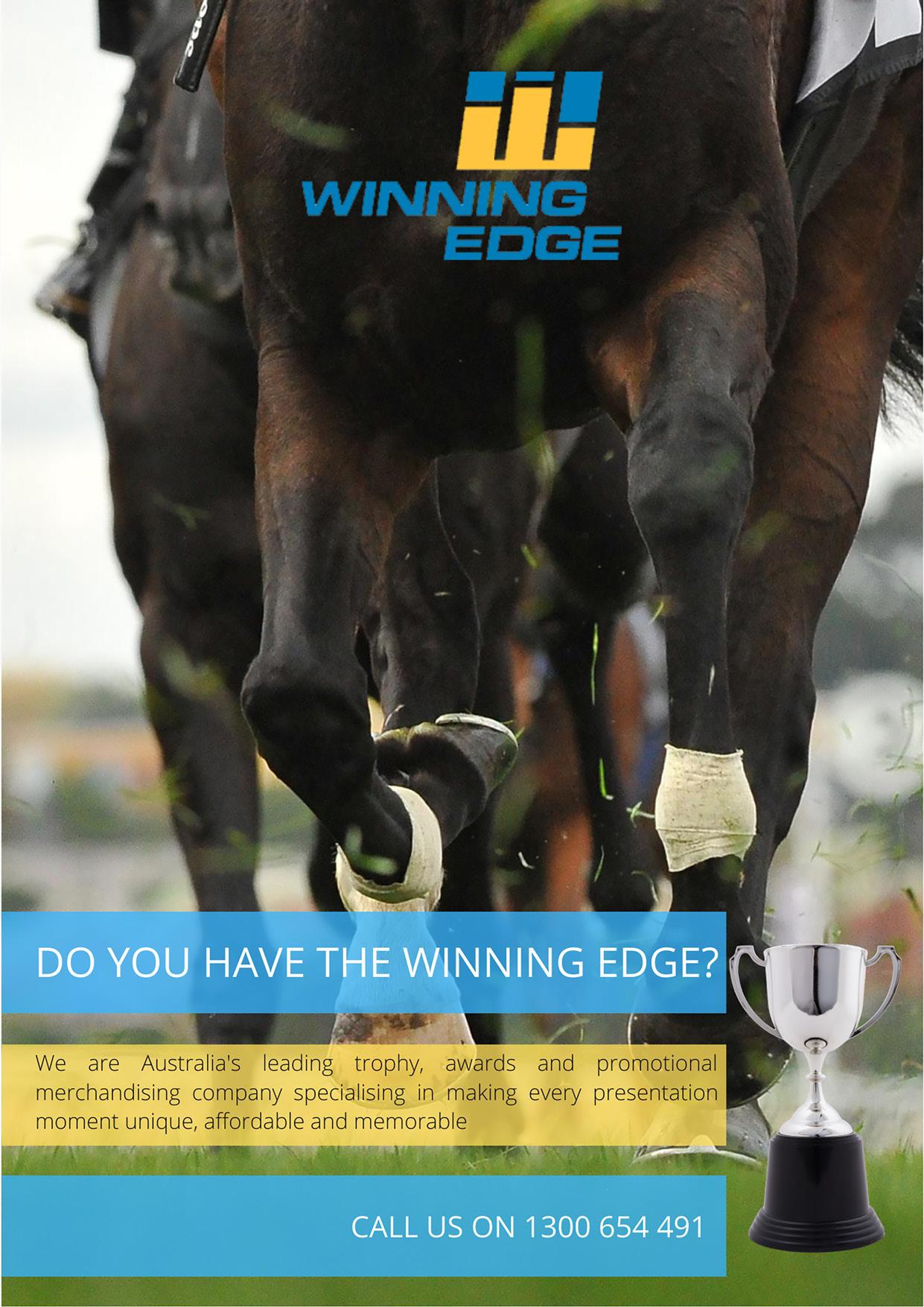

He was to start another five times without running a place. He was retired after the 1941 Wellington Cup which was won brilliantly by the outstanding Kindergarten. Sadly, Catalogue broke down in the race, and he was subsequently to fracture his foreleg. The injury failed to set and the old warrior was ultimately euthanised with his skeleton preserved and put on display at the Massey University in Palmerston North.
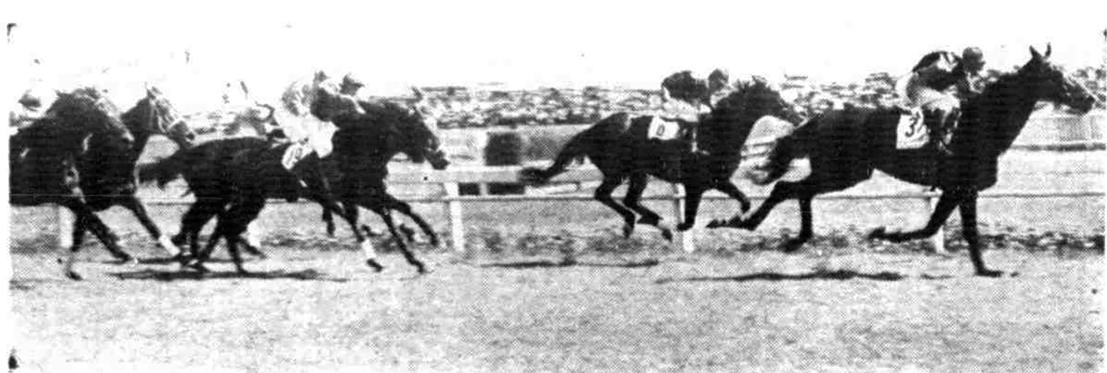

TURF MONTHLY 30
Catalogue extreme left chasing the leader Makai in the Williamstown Cup
Williamstown Cup.finish
CATMINT
CONTINUING HIS INFLUENCE
Catmint’s daughters have continued to have success across the globe quite remarkably given his performance in New Zealand. Interestingly one of the earliest international successes was by Valquest who traces to a daughter of Catmint in Barenka. Valquest was bred by Homer Maybrier in Kentucky USA and sold as a yearling in at the Breeders Sales Company, which was later to become the Keeneland, Summer Yearling Sale for US$10,100 in 1948. He was purchased by Andrew J Crevolin who was the exclusive Chrysler - Plymouth car dealer in Los Angeles. Valquest was to win the 1950 Hollywood Derby and the Westerner Stakes. Cione is another daughter of Catmint whose family was later to find international success, this time in Japan. As too did a mare called Prodice whose family was responsible for the line that produced Marvelous Crown, a Japanese bred son of Miswaki who won the 1994 Japan Cup. This race also featured well known horses in Jeune and Rough Habit. Marvelous Crown was a half-brother to Grand Flotilla by Caro who won ten races in the US and France including the Group 1 Hollywood Turf Handicap. Their dam was Maurita by Harbor Prince who won four races including the 1982 NZ Oaks and also running second in both the Auckland and Wellington Cups. Her full sister, Maurine won three stakes races including two Avondale Cups. At stud she produced three stakes winners in Aeroforce One (NZ St Leger), Anatomy (Auckland

TURF MONTHLY 31
Marvelous Crown gets up on the inside to win the Japan Cup

Lindauer Grandeur Stakes and SAJC Balcrest Stakes), and Six O’Clock News (City Of Auckland Cup, Wellington Cup and Trentham Stakes). This particular family also has given us Our Sweet Moss by Mossman who won five stakes races including the 2004 Silver Shadow Stakes and No Peer, a quality stayer of the 1980’s. He won the 1981 Turnbull Stakes and ran fourth in the 1983 Melbourne Cup behind Kiwi.
Danae is another daughter of Catmint who has continued an enduring legacy for her sire. In the 1950’s this family produced a colt called Somerset Fair by Fair’s Fair who was to be a star of NZ racing. He won a total of 21 stakes races between 1954 and 1957. As a Spring 3yo he won the Great Northern, Wellington, Avondale and Waikato Guineas as well as the King’s Plate. In the Autumn he returned to win the NZ Derby and ventured to Australia where he won the STC Hill Stakes and VRC Linlithgow Stakes. Somerset Fair returned to Australia in 1956 winning the Chipping Norton Stakes in Sydney and the St George Stakes and Queen’s Plate in Melbourne. Another of the stars from this family was the popular Mr Tiz who had great success in the 1980’s.
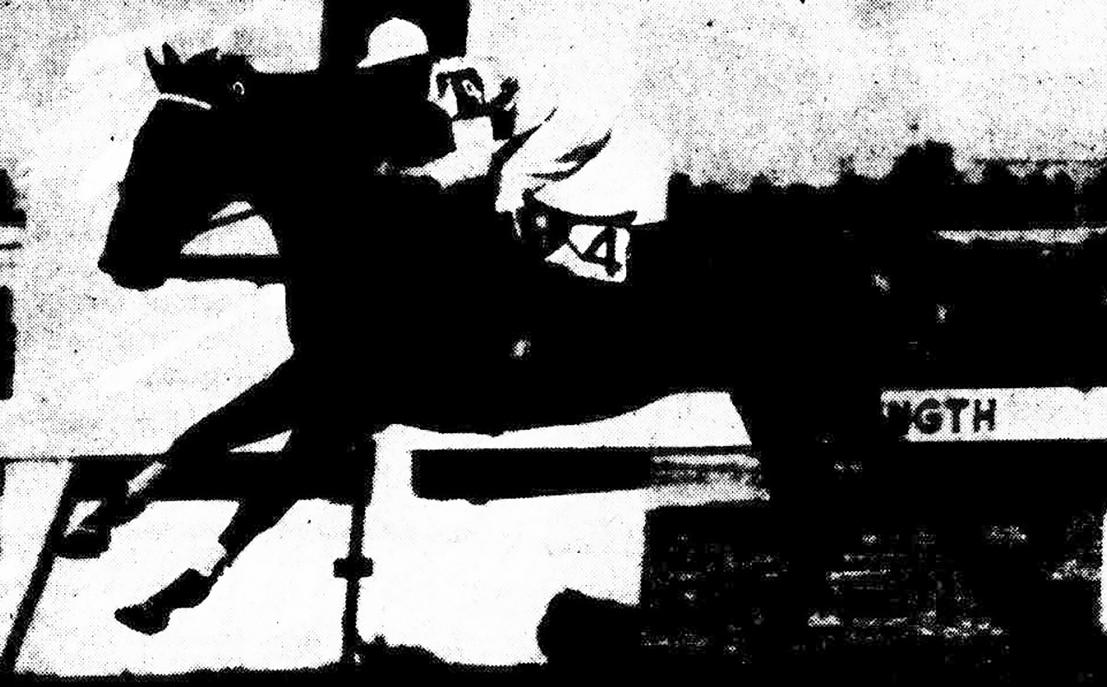
TURF MONTHLY 32
Somerset Fair winning the Queen’s Plate
Somerset Fair winning the Hill Stakes
MR TIZ
By leading Australian sire, Bletchingly, Mr Tiz was out of the NZ mare, Yir Tiz by Bismark. She had been a good mare winning five stakes races in her local country including the Group 1 Ellerslie Sires’ Produce. She came to Australia later where she won the Newcastle Newmarket Handicap. She was to eventually to head to Japan to finish her stud career following the success of Mr Tiz. That galloper commenced his racing career in NZ. He had two starts as a later 2yo, finishing third at both attempts. After a let up he returned to racing in August of his 3yo season to win a 1200m maiden before success in the Okawa Paramount HB Guineas. Moderate performances followed, but as a late 3yo he stamped himself as a horse of talent by winning his last five starts. He did not start again until November when he was third in the Superliquorland Sprint at Ellerslie. Three weeks later, he was fourth over 1200m in the Avondale Stewards. On 2 January 1989, Mr Tiz proved his quality by dead-heating for first with Westminster over the 1200m of the Group 1 Railway Stakes at Ellerslie. Three weeks later he repeated the effort by dead-heating in the Group 1 Elders Stakes with Festal over the same distance at Trentham. He did not start again for two months and failed in the Easter Mile and was sent for a spell.
Returning the following November, Mr Tiz had two unplaced runs before winning the Railway Stakes at Ellerslie, this time by two lengths from Este’s Park. Three weeks later he again won the renamed Elderbank
Stakes over 1200m at Trentham beating Vain Sovereign who had finished third in the Railway. A month later Mr Tiz won the Rolls-Royce Stakes over 1400m at Ellerslie before heading to Australia. His first run in Sydney saw him run fourth to Straussbrook in the George Ryder, followed by a sixth behind Eastern Classic in the All Aged Stakes, both times on a heavy track. Returning to NZ, his first race back as a 6yo saw him win the Bay Of Plenty Sprint followed by the Lion Brown 1200. It was then back to Australia to finish seventh behind Planet Ruler in the Gadsden at Flemington. Mr Tiz went back to NZ to win the Railway Stakes again. A second in the Telegraph at Ellerslie was followed by wins in the G1 Lion Brown Sprint and the Ellerslie Stakes before another trip to Australia beckoned. He finished fourth behind Bureaucracy in the George Ryder before finally notching up his only Australian win in the 1991 G1 Galaxy at Randwick. Back in NZ he finished second to Rough Habit over 1400m at Otaki before again heading to the paddock. Mr Tiz was to have only two starts as a 7yo, He finished a disappointing tenth in a Flying Handicap at Ellerslie carrying 62.5 kg before having another trip to Melbourne for what was to prove his last start. Mr Tiz finished third in the Gadsden behind Final Card who equalled the course record over the 1200m at Flemington on 2 November 1991. In all, Mr Tiz retired with 17 wins from 36 starts and earnings of almost NZD$1,000,000. This included seven Group 1 victories with two dead heats remarkably in successive starts.

TURF MONTHLY 33
CATMINT DAUGHTERS
CONTINUING HIS INFLUENCE
Myola was another of the Catmint daughters who have played their part in the modern thoroughbred. Piko by Fair’s Fair was another NZ star of the late 1960’s. He too won four Guineas races but also won two Derbies in the Great Northern and NZ Derby. In all he won eleven stakes races. More readers will be familiar with Sky Flyer who was by Half Iced and born in 1987. He had his first trip to Australia in the Spring of 1991 in an ambitious campaign that saw him win the Werribee Cup to gain a start in the Melbourne Cup of that year. He was to finish seventeenth behind Subzero, but ensured that his connections went home happy by running second to Silk Ali in the Sandown Cup eleven days later. The following Spring saw him return to Australia again, although with limited success. In seven starts that season in Melbourne his best result was a second to Toll Bell in the Queens Cup at Flemington. Sky Flyer returned to Brisbane in the Winter and ran second to Antwerp in the now defunct QTC Metropolitan. He then ran fifth behind Full Suit in the PJ O’Shea before the biggest win of his career in the Group 1 Brisbane Cup over 3200m when ridden by Bruce Compton and beating Cool Credit. It was to be the last win of his career, and it was two years before Sky Dancer returned to Australia, although this time he was to perform poorly. His last start was to be on 30 November 1996 when he finished eighth of nine in an Open Handicap at Sandown. He carried only 51.5kg after a two kilogram allowance for a promising young apprentice jockey named Craig Williams. Some years earlier another good stayer of the family was to make his name in Australia. Dealer’s Choice by Balios won three stakes races in Adelaide in the West End Stakes, Birthday Stakes, and his most important race win, the 1982 Adelaide Cup. He was to go to stud in NZ where he produced the Waikato Gold Cup winner, Dealer’s Charm. A daughter of Dealer’s Choice in Madam’s Choice produced two stakes winners in Classic Spirit and No Fibs.
Princess Bede was a half-sister to two NZ stakes winners in Beau Leon and Galilee. Unfortunately, it was a different Galilee with this one being born in 1932. Princess Bede was by Catmint and her family have produced some important runners especially in Western Australia. Her family gave us the 1984 NSW Derby winner, Prolific by Vice Regal but it was two brothers in All The Aces and Old Comrade that are among the best known. Both were by the good WA sire, Old Spice. All The Aces was born in 1994 and did not have his first start until an Autumn 2yo which saw him finish third in a handicap at Ascot. He then was sent to Victoria where his best result was a second at Caulfield the following May. In November 1998, as a 4yo he returned West where he won his maiden at Bunbury. This was followed by a win and a second at Ascot before winning the Group 3 WATC Stakes beating Machine Gun Tom. All The Aces then finished sixth in the Group 1 Railway Stakes behind that horse and was to have his last start in the Group 3 S Cahill Stakes, finishing seventh of eight in an amazing and brief career.
H is younger brother Old Comrade was a much different proposition. After two good runs as a 2yo, Old Comrade won at his second start as a 3yo at Bunbury. He then won the Listed Placid Ark at Ascot before running second to Umrum in
TURF MONTHLY 34
the Lee Steere. Old Comrade then won the Group 1 Fruit and Veg Stakes beating Umrum before rounding out his season with two seconds, including finishing behind Northerly in the G1 Railway Stakes. The following year Old Comrade was also to win the Railway Stakes and Fruit And Veg in WA before heading to Melbourne. He was an eye catching fifth in the Oakleigh Plate coming from sixteenth at the 400m before a close second to Northerly in the G1 St George up to 1800m. Old Comrade then beat Northerly and Rain Gauge in his most famous victory in the 2002 Australian Cup. He then went to Sydney where he ran two good races back in distance in the Ajax Quality and Doncaster before retiring.
This brings us to arguably the most important daughter of Catmint in Wild Mint. The mare was born in 1925 from what by that stage had become a very moderate NZ one. It had originally landed in that country in the 1850’s but this line had limited success. It was interestingly the same Bruce Lowe female line that had given us the great Carbine and perhaps that played some role in the future
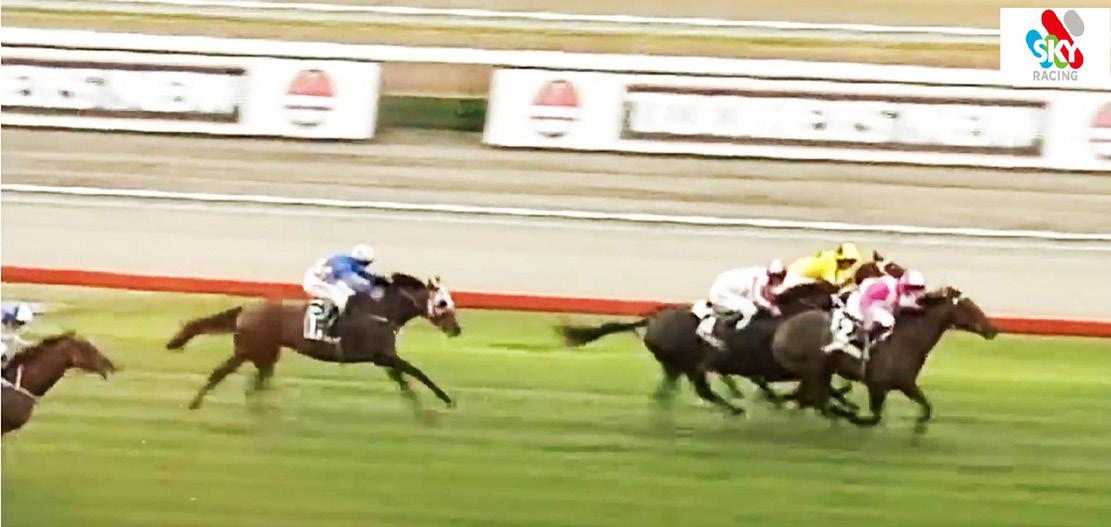
success of the line. Wild Mint had only one enduring progeny, a daughter called Mademoiselle Latour by the NZ bred General Latour, a stallion who had won the 1911 Great Northern Guineas. Mademoiselle Latour was to change the fortunes of the family by producing Saboteur by Sabaean who won the 1954 Harcourt Stakes. Another son in Sayani by Lord Bobs had won seven straight races in NZ before being sent to Australia where he failed to live up to his home form. Nonetheless, it was proof that the family was on its way up. By the 1990’s the family had well and truly established itself in the upper echelon of racing. We saw horses like King Aussie by Moss Trooper winning the 1990 Sydney Cup and Chairman’s Handicap, having won the Tatt’s Cup the year before. Delinquent by Archregent won the 1998 Carlyon Cup while Intelligent Star by Picnicker won three stakes races including the 2002 Rubiton Stakes. Blaze The Turf by Blazing Sword won the VATC Autumn Stakes and Zeditave Stakes and went on to become the dam of Soleil who won the 2006 MRC Christmas Stakes. The standout though may be Ortensia by Testa Rossa who took Wild Mint’s legacy around the world.
TURF MONTHLY 35
ORTENSIA
This daughter of Testa Rossa was born in 2005, out of Aerate’s Pick by Picknicker. She first faced the starter on 29 March 2008 at Bendigo where she impressively won a 2yo maiden over 1000m. After another win at Sandown she went to the paddock with connections no doubt happy with their new star. As a 3yo, she finished a good third behind Time Thief first up at Moonee Valley over 1000m after getting back in the field. A second in the Champagne at the same track followed when she again got back and stormed home over 1200m. She finished off the Spring with a win in the G3 Tranquil Star at Caulfield. In the Autumn, a first up win at Caulfield was followed by a trip to Sydney which saw her win the Listed PJ Bell. A narrow second in the James Carr saw her in Brisbane for the winter winning the Listed Glenlogan Park Stakes and Group 2 QTC Cup. A narrow third in the Group 1 Stradbroke behind Black Piranha after coming from 18th at the 400m saw connections send her to the paddock for a spell.
Back in Melbourne Ortensia had three runs before heading to Perth where she won the Group 2 Winterbottom. The following Autumn saw her finish first in The Galaxy in Sydney at Group 1 level although she was subsequently disqualified. Another winter in Brisbane did not yield great reward, and a let-up saw her run third behind Black Caviar in the Patinack Classic at Flemington. Not unfamiliar with travelling, Ortensia then jetted off to Hong Kong for a tilt at the Hong Kong Sprint where she finished fifth behind the South African JJ The Jet Plane. Back in the Autumn, her
best result was a third in the CF Orr behind Typhoon Tracy. After another unlucky run in the Goodwood, Ortensia was transferred from Tony Noonan to the stable of Paul Messara who had an ambitious campaign in mind.
She returned for the new stable to win the GH Mumm Stakes at Flemington before heading to Perth to win her first Group 1 in the Winterbottom Stakes. After a break it was on another plane headed overseas, this time to the UAE where she won the Al Quoz Sprint. It was then to England where she took a little time to adjust to the local conditions. Her first up run in the King’s Stand Stakes at Ascot was disappointing but she followed this up with a good fourth in the July Cup at Newmarket. Ortensia then won the Group 2 King George at Goodwood before she was outstanding in winning the Group 1 Nunthorpe Stakes at York. Sadly, the travelling and hard racing had taken its toll by then and she was not herself in a moderate run in the Sprint Cup at Haydock. Returning to Australia, it was clear that she was not the same horse. Her performances were below par in the Oakleigh Plate and Newmarket and retirement beckoned. Ortensia was given one more run, becoming perhaps the first horse to run in a race named in her honour when she finished a moderate ninth in the Listed Ortensia Stakes at Scone carrying 62kg. Retired from racing to Arrowfield Stud, Ortensia tragically died after producing only two foals, both fillies who showed little on the track. Both are now at stud with their youngest foals yet to race. Hopefully we will see this line continue to excel.
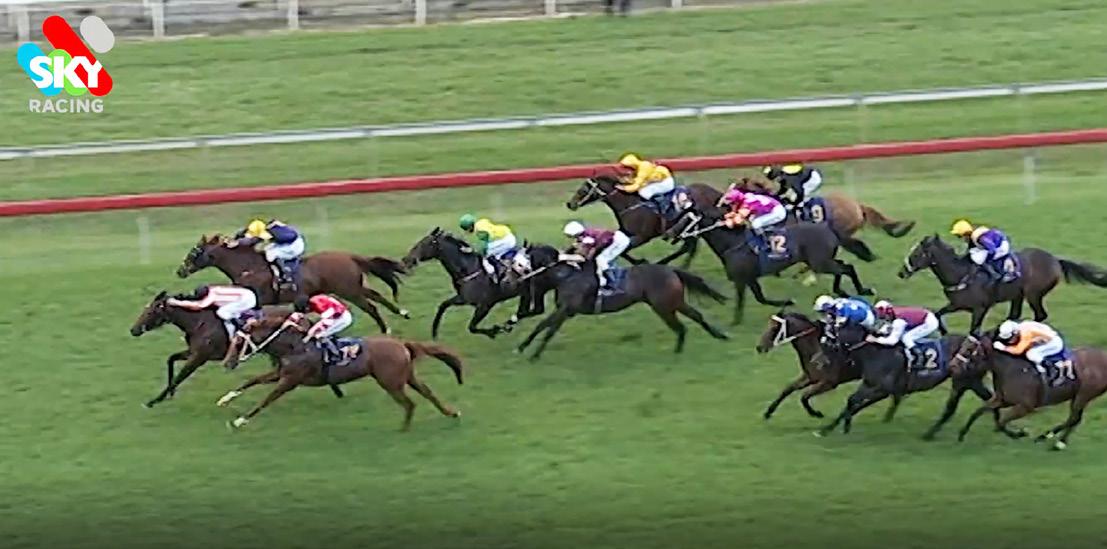
TURF MONTHLY 36
WILD MINT HER INFLUENCE GROWS
One line of Wild Mint that is readily identifiable to most readers will be a mare called Eau D’Etoile. The daughter of Sir Tristram won the Listed Eulogy Stakes in NZ but was an outstanding broodmare producing four stakes winners. Her first was Kenny’s Best Pal by Bletchingly who won the BMW Vase in 1992 and the Australian Guineas in 1993. He was a good sire producing plenty of winners and six stakes winners including Astralita (SAJC Breeders’ Stakes), Mardi’s Magic (STC Magic Night Stakes) and German Chocolate (STC Premiere and Missile Stakes). His daughters were good broodmares and we can find Kenny’s Best Pal in the pedigrees of horses like Racing To Win, Purrealist and Captain Sonador. Eau D’Etoile’s next group winner was the outstanding filly, Bint Marscay who won the Kindergarten Stakes, Magic Night Stakes and Golden Slipper as a 2yo in 1993. She returned as a 3yo to win the VATC Chirnside Stakes. She was to prove a top-quality broodmare producing three stakes winner in Bollinger 2003 Coolmore Classic, AJC Surround Stakes and South Pacific Classic), Mannington (2000 VATC Blue Diamond Prelude, and VRC Talindert Stakes) and Sheraton (2001 VATC Blue Diamond Preview). Eau D’Etoile’s third stakes winner was another Group 1 winner in Filante who we will look at in more depth shortly. Her final stakes winner was Eau D'Scay by Marscay who won the 2000 Gosford Guineas. We cannot mention the mare though without mention of the controversy that was to arise at stud.
The mare was owned by Jim Fleming. Fleming had created a supermarket chain throughout Australia before becoming a large-scale property developer. He was also an enthusiastic breeder owning Tyreel Stud at Agnes Banks, near Sydney. Following Eau D’Scay, the mare was mated with Danehill but sadly that foal was to die. She was not served the following year but then failed to get in foal the following two seasons. Fleming sought the assistance of Dr Angus McKinnon, one of the leading experts in equine reproduction. He determined that while it was possible for Eau D’Etoile to conceive, it was not possible for her to carry a foal due to scarring of the uterus. The only alternative was embryo transfer when the fertilised embryo is removed from the mare and transferred to a surrogate mother. In 2001 and 2003 foals were produced by this method but the Australian and New Zealand Stud Books refused to accept the progeny. Fleming was to later launch legal action against the Stud Book arguing that this method, and the failure to allow artificial insemination amounted to a restraint of trade. The argument caused deep rifts within the breeding industry, but the courts eventually ruled on the side of the Stud Book.
Returning for a moment to Wild Mint herself, we have purposefully left out some of the early stakes winners from the family as they need closer inspection. While it took a few generations, we eventually saw a colt called Classic Mission by Persian Garden born in 1968. Classic Mission was to become one of the most controversial horses in Australia at the time which in itself was interesting given that Eau D’Etoile was herself to become embroiled in controversy. Not long after this we also saw the emergence of another Melbourne Cup winner from the family in Hyperno, a great old warhorse that also deserves his own story. Along with Filante, these three stars will finish our tale of Catmint and next month we will look at another of the Spearmint sons who ensure the remarkable legacy of Carbine.
TURF MONTHLY 37
CLASSIC MISSION
NO STRANGER TO CONTROVERSY
NZ trainer Syd Brown loaded three of his horses onto a special charter flight that arrived in Sydney on 10 September 1971. Classic Mission, Classic Nature and Crown Law were joined by three other Kiwis all aimed at the rich Sydney and Melbourne Spring races. Brown accompanied his team on what proved to be a long flight. It struck turbulence and there was a hiccup with offloading the horses due to equipment failure. These dramas were to be a portend to what was to come.
Brown as a 20 years old had been the youngest trainer ever to be licenced in NZ at the time. He made his name as the trainer of Redcraze, the NZ champion. He had brought the gelding to Australia with mixed success and the horse suffered from a split heel and hurt himself in a sand-roll after winning the Turnbull. He still managed to finish an unlucky fourth behind the TJ Smith trained Toparoa in the 1955 Melbourne Cup after striking interference in the run. Shortly after, Redcraze’s owner Jack Bradley died leaving the horse to his widow Ada. Smith took the opportunity to pursue the horse having been impressed by him in Melbourne, and while Ada refused to sell, she did finally agree to allowing Smith to train Redcraze, much to the disgust of Brown.
The Brown horses settled in well in Sydney and gun jockey George Moore was engaged to ride Classic Mission in the Guineas and Derby. But all was to change the Thursday before the race when Brown’s breakfast was interrupted with the news that the AJC stewards had arrived at his stables. They were joined by officials, veterinarians and plenty of newspaper reporters who had been tipped-off about a racing scandal about to break. Brown was met by chief steward, Jim Meehan who advised that Classic Mission was a 4yo and ineligible for the Derby. He had been inspected by two vets who both attested that he had the teeth of an older horse.
As a background to a horse’s teeth, let us quote from Ian Ibbett’s wonderful website www.kingsoftheturf.com:
Perhaps I should explain the arcane mysteries of determining a horse’s age by his teeth. “Never look a gift horse in the mouth” is a proverb that refers to being rude or ungrateful for a gift or present. It derives from the practice since time immemorial of horse-dealers looking at a horse’s teeth to determine its age. “Straight from the horse’s mouth” is another expression that has been handed down to posterity and one frequently used on racecourses to verify the reliability of the information concerning a sure thing on which to bet. Again, the expression relates to the fact that deception as to a horse’s age is almost impossible – particularly a young horse – if one is skilled in the art of examining equine teeth. And telling the age of a young horse is simpler and more reliable than an older horse for the reason that horses – like humans – lose their baby teeth, to be replaced by adult teeth, at predictable ages.
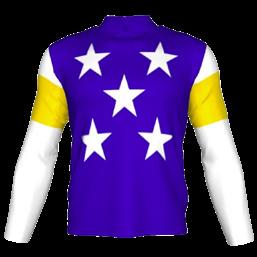
TURF MONTHLY 38
The immediate furore quietened when Moore took Classic Mission for a gallop the following day, only to have the horse return lame after striking himself and injuring his off-foreleg. It was feared that the colt’s Spring was over as Brown reluctantly scratched the horse from the Guineas. It was only a matter of hours before the AJC officially cleared the horse to race formally announcing that the variation in his teeth, although unusual, was not unknown. A lot of work was done in the background, with the AJC sending people across the world to investigate the rare occurrence. In NZ, they interviewed the breeder sixty-eight-year-old Jack Higgs, a foundation member of the New Zealand Breeders’ Association. Brown had trained some of Classic Mission’s close relations for Higgs in the past and currently had the colt’s one-year-older sister and one-year-younger half-brother in training. He had also raced Min Flicka, another half-sister to Classic Mission by Final Court who was later to become the maternal granddam of the Melbourne Cup winner, Hyperno. While not all were happy, the AJC continued to scour NZ for information to disprove Classic Mission being a 3yo up to 48 hours before the Derby, but none existed.
The AJC Derby was certainly not a classic edition with ten males and one filly facing the starter. While rain had fallen, the track was officially rated as good although a blustery wind was blowing. It turned out to be the slowest time for the race since 1945. Rosehill Guineas winner Latin Knight was perhaps the unlucky runner in the race, drawing wide and striking trouble but it was Egyptian, a gelding who had won the Canterbury Guineas and finished second in the Rosehill Guineas who was sent out as favourite. Despite the slow tempo, Classic Mission settled towards the rear but managed to hit the front near the post courtesy of a typical George Moore ride. In Melbourne Classic Mission ran a disappointing seventh behind Tauto in the Cox Pate but was to win the Victorian Derby at his next start. Historically, it was an important event as it was to be George Moore’s last race ride, deciding to retire on the spot after the success. Classic Mission had only one more start in winning the CB Fisher Plate on the last day of the VRC Spring Carnival. He beat the good gallopers Tails and Fileur in the race. Classic Mission broke down in trackwork at Warwick Farm the following Autumn and was never to race again. He retired to stud at Mr J Allison’s Uley Park Stud at One Tree Hill in South Australia where he had little success. Classic Mission produced only one stakes winner in the 1980 WATC Belmont Cup winner, Alician. He died on 1 November 1993 and while he may not be remembered by many, he dominated the Spring of 1971 in more ways than one.

TURF MONTHLY 39
HYPERNO A CROWD FAVOURITE
Hyperno was an immensely popular stayer of the 70’s and 80’s but one that always could illicit mixed emotions. Many of those arose from his Melbourne Cup win, but we will get to that part of the story in a moment. Hyperno was trained by Geoff Murphy at Caulfield early in his career, and had one start as a 2yo, not surprisingly finishing well back in a 1000m maiden at Werribee. As a 3yo he did not show a lot until he got to a mile, and at his fifth race start he ran second over this distance at Bendigo. He was to break his maiden over the same course and distance at his next start on Remembrance Day 1976. Hyperno then won his next three starts at Caulfield and Flemington before a brief let-up at the end of December. He was back at the races in February but did not win again until he got out to the 2000m at Flemington. Hyperno won his next start at Sandown over a mile, and then ran second in the VATC Easter Cup, beaten a half-neck by Princess Veronica. A third in the VRC St Leger followed when he started the 7/4 favourite and then he finished sixth in the Moonee Valley Cup to round off his 3yo season.
Returning as a 4yo, Hyperno was soon in NSW for a tilt at some of the Autumn riches. He won the NJC Gold Cup and ran a good second in the AJC Craven Plate behind Denise’s Joy with Battle Heights in third. A poor run in the Metropolitan was followed with another below par effort in the Caulfield Cup behind Ming Dynasty. He bounced back to run second to Inceptor in course record time in the Werribee Cup and then lined up in the 1977 Melbourne Cup. Despite starting at 66/1, he ran well to finish third behind the Bart Cummings trained Gold And Black. A second in the Sandown Cup followed, and Hyperno had a brief let up, returning a the end of January to run a good third behind Family Of Man in the William Reid Stakes. He then won three of his next four starts in the CF Orr Stakes, TS Carlyon Cup and Tancred Stakes in Sydney. His first unplaced run for the year came in the Sydney Cup when he finished sixth behind My Good Man. Back in Melbourne he ran second in the Moonee Valley Cup after Harry White dropped his hands near the post when he was in front, allowing Clear Day to win narrowly. Hyperno made amends in the Adelaide Cup at his next start but then travelled to Queensland to run seventh in the Brisbane Cup behind Muros and Ming Dynasty. Hyperno then went to the paddock after a long campaign. Disagreements between the owners and Geoff Murphy saw Hyperno transferred to the stable of Bart Cummings for the rest of his career.
The hard campaign as a 4yo started to tell and Hyperno was to have only two starts as a 5yo. He ran second in the JJ Liston behind So Called and third in the Toorak behind Salamander before Cummings sent him out for another break. He was not to return to racing for almost a year and he was taken along slowly by Cummings, the master of preparing a horse for the Melbourne Cup. Hyperno started six times in the Spring before the Cup with his best run being the preceding Saturday in the Mackinnon Stakes where he ran fourth behind Dulcify. Hyperno was well backed in the Cup and started at 7/1 in a race he won by a short half head by a head from Salamander and Red Nose. The race was controversial in that the short-priced favourite was the champion Dulcify who had impressively won the Mackinnon at his last start. Tragically, the star Colin Hayes runner was injured in
TURF MONTHLY 40
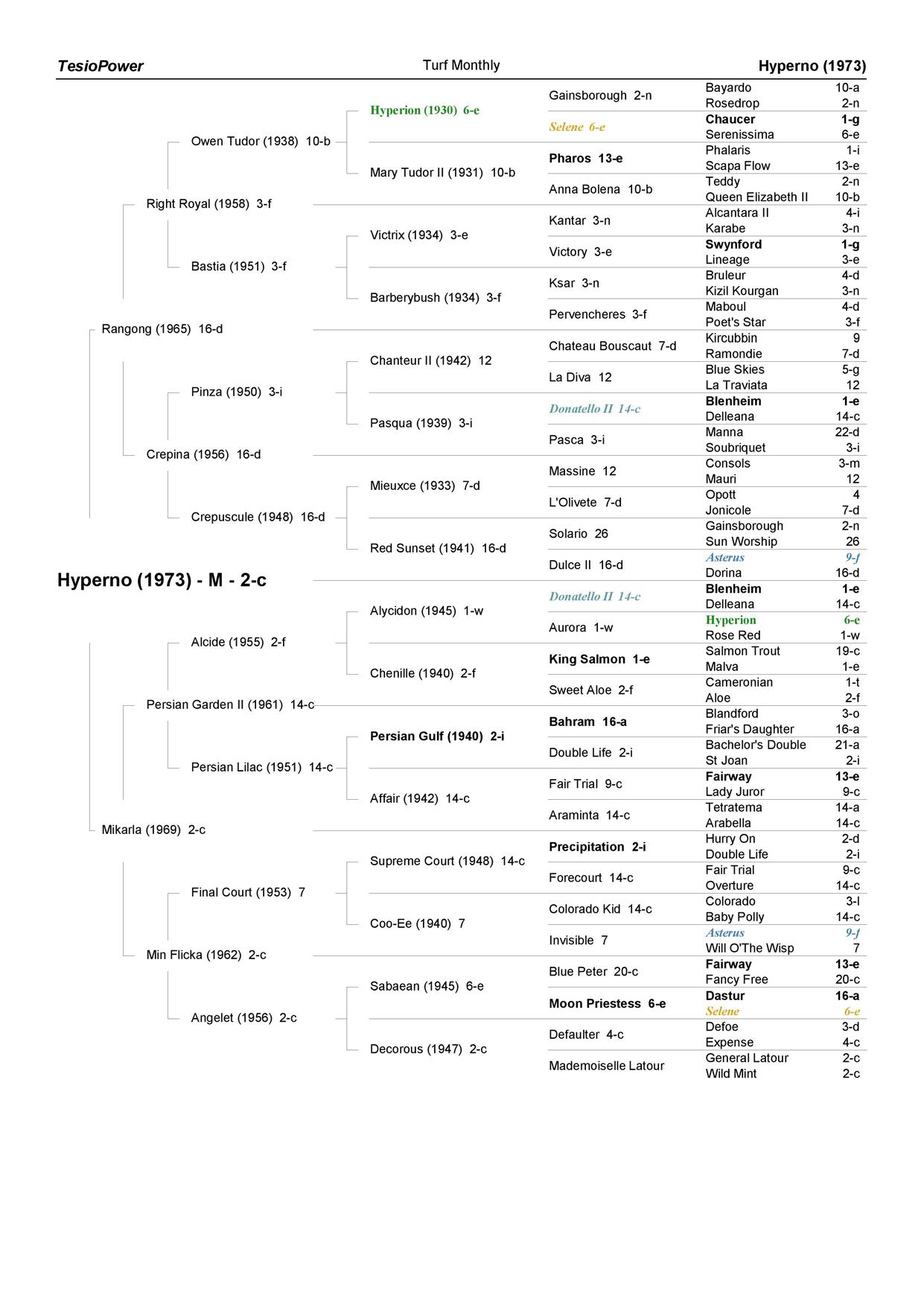
Hyperno has a pedigree that is probably unfamiliar to many. With 5.47%, it is within a range that has proven successful over much of recent thoroughbred history. Hyperno is by Rangong, a solid sire primarily of staying types. His dam was a half-sister to the great Crepello. Importantly Rangong is from the Hyperion sire line, and the closest duplication in the pedigree of Hyperno (4mx6f). We also see that Hyperion’s dam, Selene is duplicated through a daughter in Moon Priestess, the dam of Sabaean. Donatello we see duplicated 5fx5m, and the remaining duplication is that of Asterus at 6fx6f. Anyone with an interest in pedigrees would do well to compare this pedigree with that of Filante who shares many of the same influences with that of Hyperno.
the run when galloped on and ultimately euthanised. Even more tragically for many, the horse that galloped on Dulcify was the eventual winner Hyperno who was never forgiven by some racing lovers. Hyperno went some way to making amends by winning the Queen Elizabeth the following Saturday as the 3/1 favourite beating Magistrate. Cummings then sent Hyperno out for a spell.
Hyperno
returned in the Autumn to run second in the CF Orr before winning the Blamey. A third in the St George was followed by a fourth to Ming Dynasty and Double Century in the Australian Cup before another rest. Now a 7yo, Hyperno started slowly but ran third in the Underwood over 2000m before winning the G1 Caufield Stakes over 2000m beating another emerging star in Kingston Town. Hyperno then rand second to Ming Dynasty in the Caulfield Cup with Kingston Town in third. He then went into the Melbourne Cup where he started the 3/1 favourite but he struggled to finish seventh behind Beldale Ball. Hyperno then went out on the Saturday and won the Queen Elizabeth for the second time, this time as the 10/9 favourite. After a break, Hyperno was back in the Autumn to run third behind Manikato and Turf Ruler in the William Reid. A fifth in the CF Orr was followed by a dead-heat with My Brown Jug in the St George Stakes and then a win in the Blamey Quality. He then won the Australian Cup and Rawson Stakes before finishing fourth in the Tancred and second in the Queen Elizabeth. Hyperno was crowned the 1981 Horse of the Year but it was to be close to his final hurrah. As an 8yo he was competitive but did not win from nine starts, He was placed in the Aurie’s Star, Underwood Stakes and Caulfield Stakes and finished sixth in the Melbourne Cup behind Just A Dash. He broke down after running third in the CF Orr behind Lawman and did not start as a 9yo. Hyperno had one more preparation as a 10yo, running down the track in the Aurie’s Star and then surprising most onlookers by finishing third behind Pleach in the Craiglee Stakes at 80/1. Hyperno was retired to Harry White’s property where he lived a peaceful life until passing away in 1982. Such was the popularity of the horse that he had his own song, called Go Hyperno Go sung by Slim Whittle and broadcast on the Punter to Punter radio program on 3RRR in the early 1980s
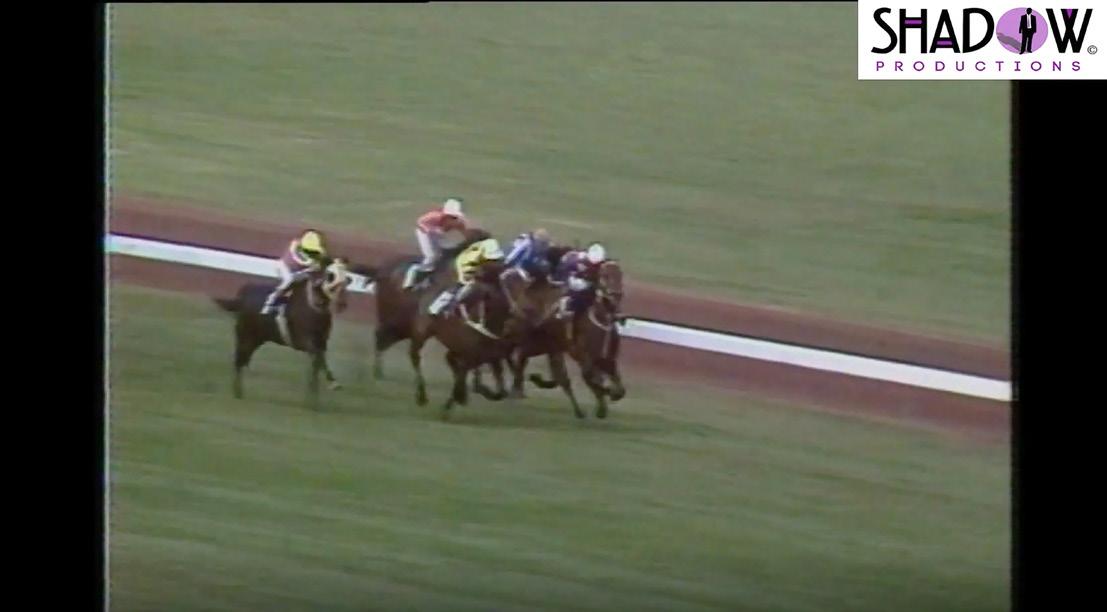
TURF MONTHLY 42
FILANTE A VINTAGE CROP
Filante is one of those horses who was unlucky in that he raced against some of the best we have seen. He was part of a wonderful crop of 3yo’s that would certainly have been hailed at any stage throughout history. He raced against such names as Octagonal, Saintly, and Nothin’ Leica Dane from his own age group, and also other topliners like Encounter, All Our Mob, Juggler, Dane Ripper and Circles of Gold as he got older.
Filante was a son of the imported stallion Star Way who stood in NZ with great success. He was an interesting addition to the NZ bloodlines as his own race performance and family did not necessarily stamp him as an obvious horse to bring to this region. He was however a son of Star Appeal who had won the Eclipse Stakes in the UK and the famed Prix de l’Arc de Triomphe in France. In turn, Star Appeal was from a quality German female and hailed from the Herbager sire line which traced back to the wonderful Dark Ronald line.
The colt, trained by Jack Denham, had his first race start in a 2yo maiden at Randwick on 12 June 1995. He was ridden by Craig Carmody and finished fourth over 1200m behind Encores who himself was to prove a quality racehorse winning the Phar Lap Stakes as a 3yo. Filante then won an open 2yo race at Rosehill before heading to the spelling paddock. He returned in January of the following year to win again at Rosehill, this time with Darren Beadman in the saddle. Filante then ran second to Catalan Opening in the Group 2 Royal Sovereign before finishing fourth behind Nothin’ Leica Dane and Octagonal in the Hobartville Stakes at Warwick Farm. He had Mick Dittman on board when he finished second to Octagonal in the Canterbury Guineas over 1900m. He then finished fourth in the Rosehill Guineas on 23 March beaten only 1.3 lengths behind Octagonal and Saintly in race record time. He then finished third behind those two champions in the AJC Derby, again beaten by only a length.
Awellearned rest saw Filante return to win the Warwick Stakes over 1400m, this time with Saintly three lengths in arears. He then won the Chelmsford with Saintly and Nothin’ Leica Dane filling the placings before he ran second to Juggler in the Open Group 1 George Main. Brian York was on board when Filante won the Epsom beating All Our Mob and Iron Horse before heading to Melbourne to finish second in the Coongy Handicap with Dittman back in the saddle. The winner was Circles of Gold and Filante was less than a length away having come from twelfth at the 400m. He then finished second to Saintly in the Cox Plate. Filante was beaten only a head by the other champion and was in front until the last stride. He then ran second to All Our Mob in the Mackinnon but was sent to the spelling paddock rather than take on the two miles of the Melbourne Cup that saw Saintly establish himself as a true champion. Filante came back in February but had two substandard runs in the Clissold with Jim Cassidy riding, and fourth behind Octagonal in the Chipping Norton. He was then sent back to the paddock with his reputation taking a hit.
TURF MONTHLY 43

Aftera six month break, Filante bounced back to win the Warwick Stakes and then ran second in the Chelmsford on a Heavy 10 behind Juggler. He then ran into the top 3yo Encounter who had taken everything before him in the wfa George Main, beaten less than a half-length. In Melbourne Filante won the Group 1 Yalumba by over two lengths from Alfa and Tarnpir Lane before again running second in the Cox Plate. This time he was beaten by Dane Ripper, another from the Bart Cummings stable. Filante went to the start as favourite and was ridden by Jim Cassidy. Encounter over-raced in the lead, but Schubert made a move at the 900m flushing out Cassidy on Filante. He went earlier than he had wanted and led around the turn, only to be run down by the lightly raced Dane Ripper who started at 40/1. Filante then ran third to Ebony Grosve in the Mackinnon before again going for a spell.
The stallion returned in the Autumn over the unsuitable 1200m of the Clissold. He then ran third in the Chipping Norton again behind Encounter. He was retired to stud where he had only modest results. In fact, all of the champion 3yo’s of his year underperformed at stud against the huge expectations. His best progeny was Macedon Lady who won the 2002 MRC One Thousand Guineas.
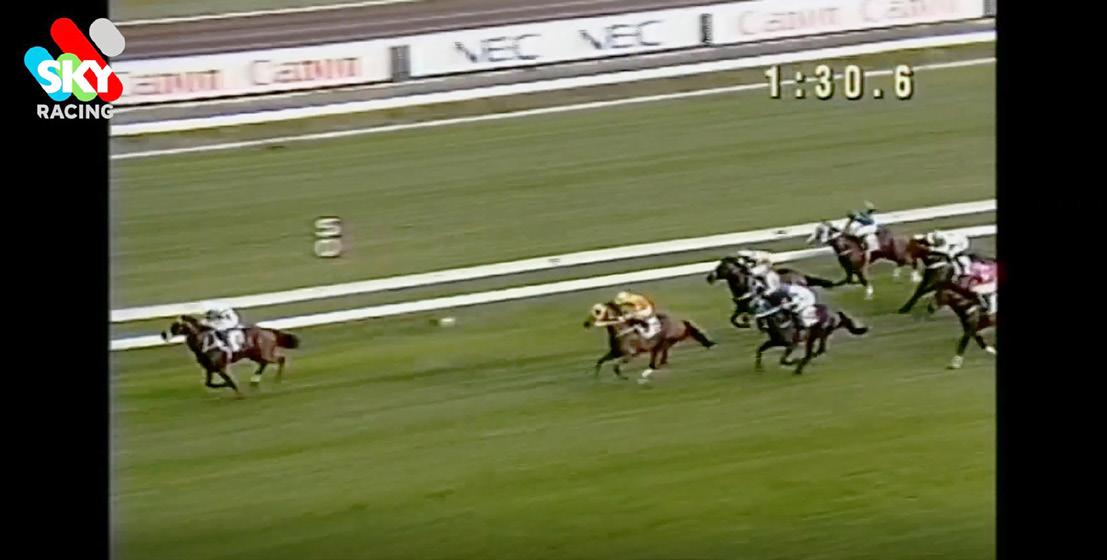
TURF MONTHLY 44

Filante has relatively little inbreeding in terms of the modern breed. But at 5.08% it is a pedigree that is still in an important range for stakes winning horses. We see that the closest duplication is in the fifth and sixth generation and these were traditionally where pedigree theorists found many of the important influences. In the case of Filante we see Hyperion (6mx5f), Djebel (5mx6m), Donatello (6fx6f,6m) and Selene (5fx6f,6m). The importance of Selene cannot be ignored and she was a mare that was found in the female line of Sir Tristram and was highly talked of in pedigree circles when that stallion was at his peak. We also see of course that Star Way, the sire of Filante is also from the same female line. Selene of course was also the dam of the great Hyperion who was the grandsire of the immortal Star Kingdom. We often ignore the importance of Donatello who was the sire of Alycidon, another important and often underrated influence in the modern pedigree.

HYPERNO - 2002 AUSTRALIAN CUP
It is hard to really get a guide on just how good the 1981 Australian Cup field really was. Number one saddle cloth was carried by Beldale Ball who had won the Melbourne Cup the previous Spring. He had raced twice in the Autumn without success, and the Australian Cup was to bring no joy to the stable. In fact, the stallion was to return to the US in June of that year. Bohemian Grove was another of the Colin Hayes stayers who had won The Dalgety the previous Spring and returned in the Futurity. Hyperno, who we have written about this month, was to go on to become the 1981 Australian Horse of the Year. He was a proven stayer and he started at what proved to be the rather generous odds of 11/8. He had won his two previous starts in the weight-for-age St George Stakes over 1800m and Blarney Quality over 1600m. Next was another Bart Cummings entry in Ming Dynsasty, the wonderful grey who had won the race twice in 1978 and 1980 but his form was moderate leading into the race. One of the biggest challenges would come from the consistent Turf Ruler who had been placed in four consecutive races including the 1200m Newmarket at his previous start behind Elouda bay. He had also finished behind Manikato in two of these runs and his performance in stepping up to the 2000m was a great effort by the horse and his conditioner, Angus Armanasco. The 4yo Mr Independent from the Jim Moloney start had won his previous two runs including the Group 2 Carlyon Cup. TJ Smith had entered My Brown Jug who had finished second to Hyperno in the Blamey after dead-heating with that horse in the St George. He was never to win another stakes race but retired to stud in NZ where he had limited success but was to produce the SA Oaks winner, Our Jug. Colin Hayes also had the 3yo Our Paddy Boy in the race, who suffered a bump in running and choked down. He was in a poor state after the run, being sent to the vet for treatment. He recovered and was to go on to win the Sydney Cup and

TURF MONTHLY 46

AJC Derby later in the Autumn. Bart Cummings also had the 3yo Real Force in the race who had won the Schweppes Cup two starts before. The final runner was Silver Bounty who did not figure in the race, but was to go on to win the Freeway and Memsie Stakes and the Caulfield Cup later in the year. So there you have it. An incredible mix of tried performers and up and coming horses but clearly Hyperno was superior at that stage of their careers. Jockey Harry White said about his mount after the race, "He's just too good. He's getting better every run. The race wasn't run to suit him, it was too slow early, and he had to swing wide to get around the field." The won was Cummings’ eighth Australian Cup success, having scored with Arctic Coast (1968), Gladman (1973), Leilani (1975), Lord Dudley (1976), Ngawini (1977), and Ming Dynasty.
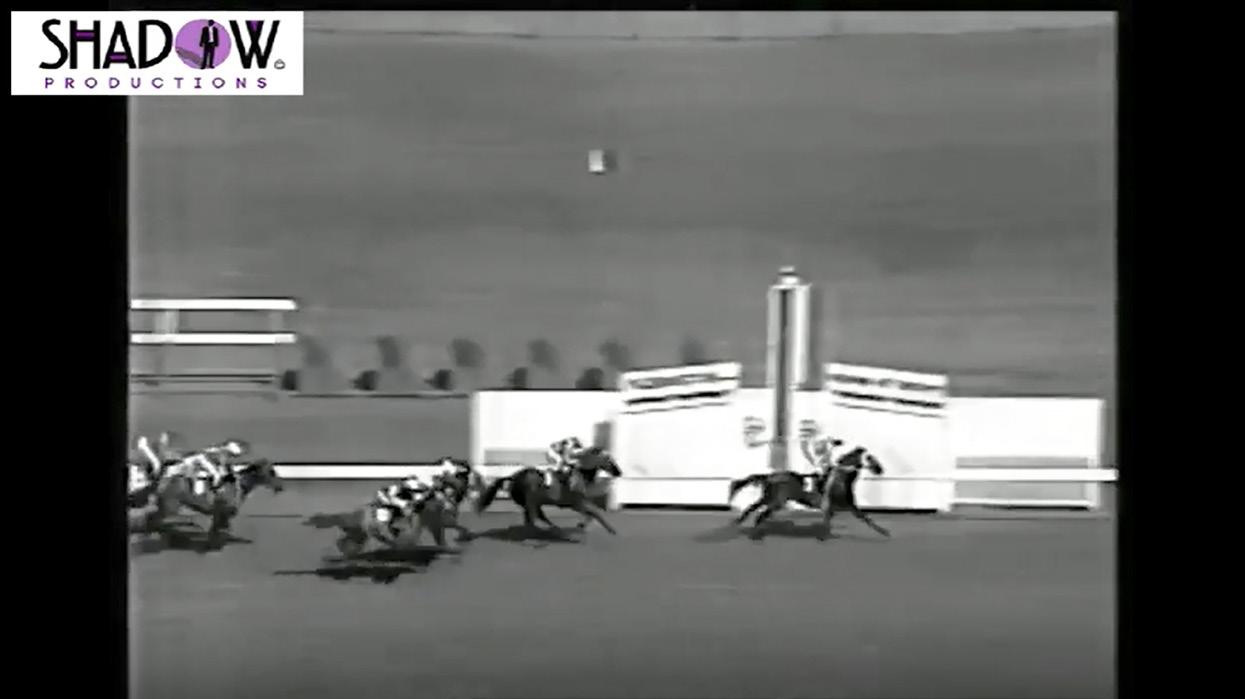
TURF MONTHLY 47























 Sainfoin
Sainfoin































